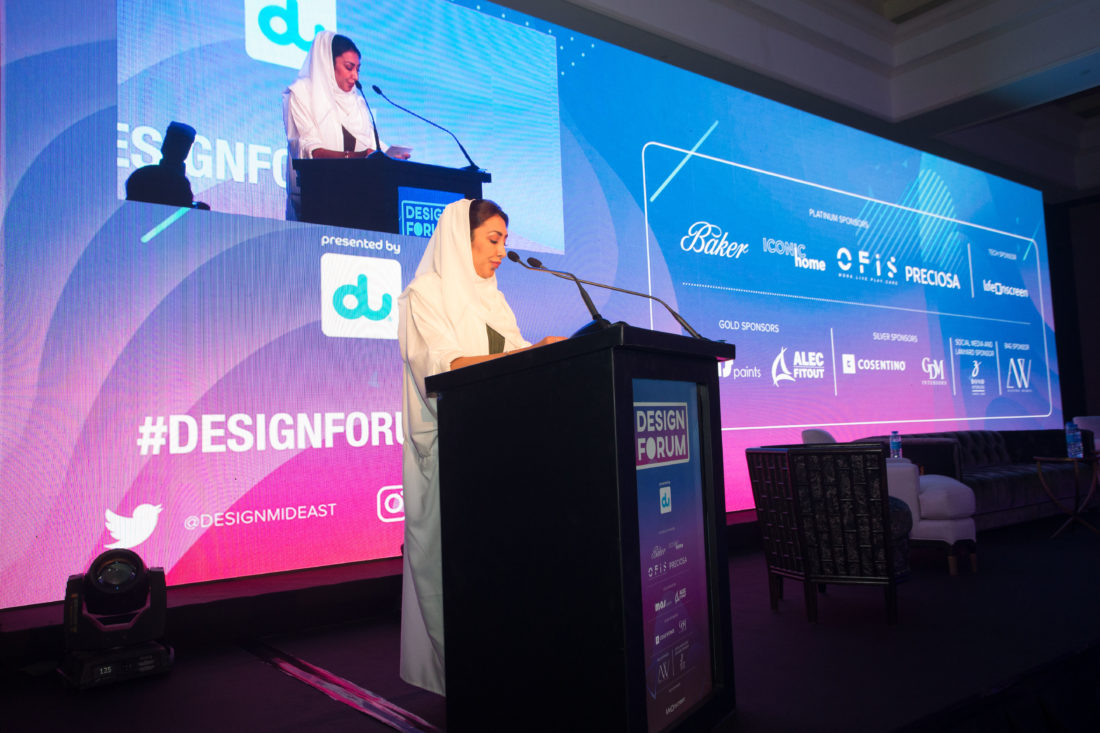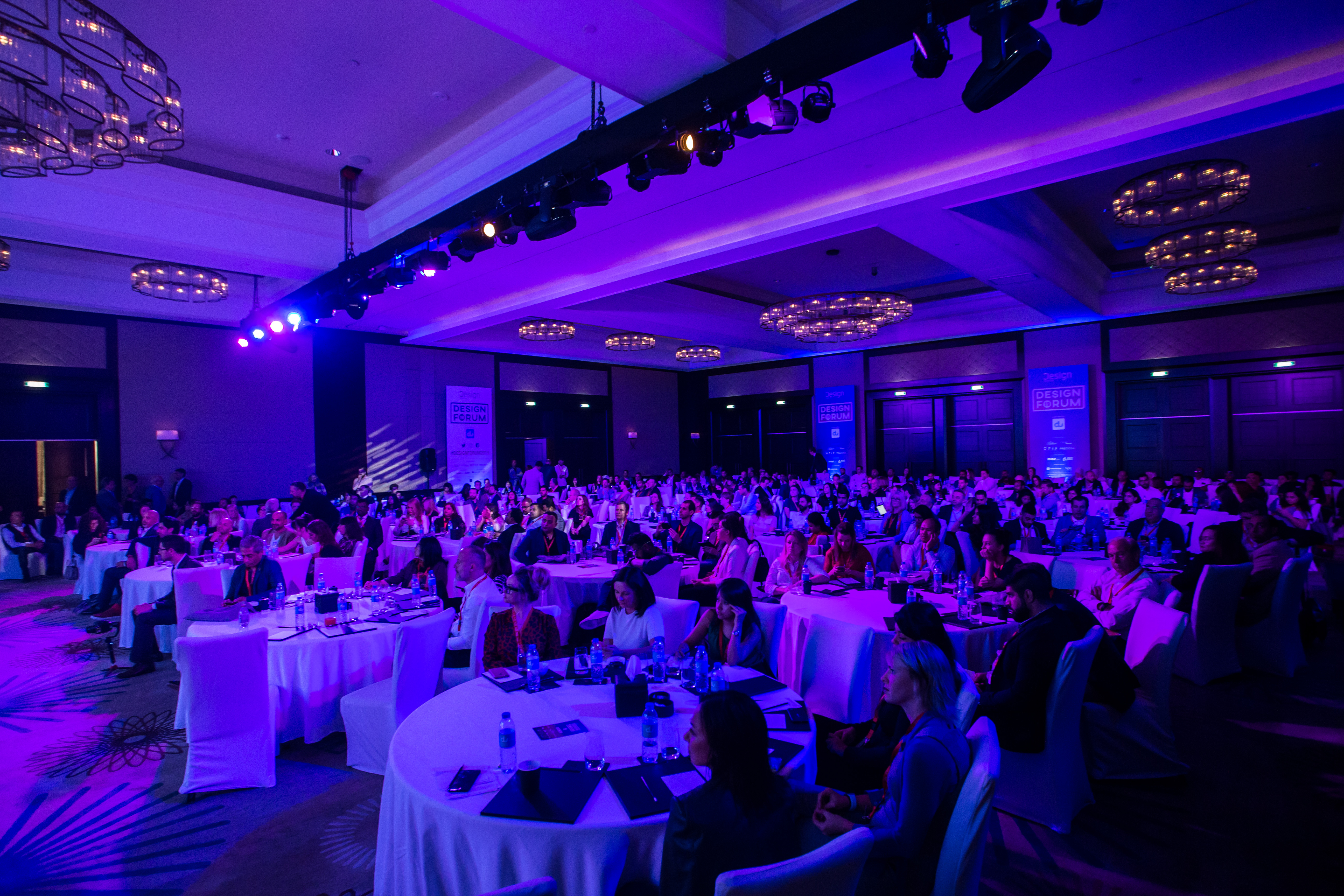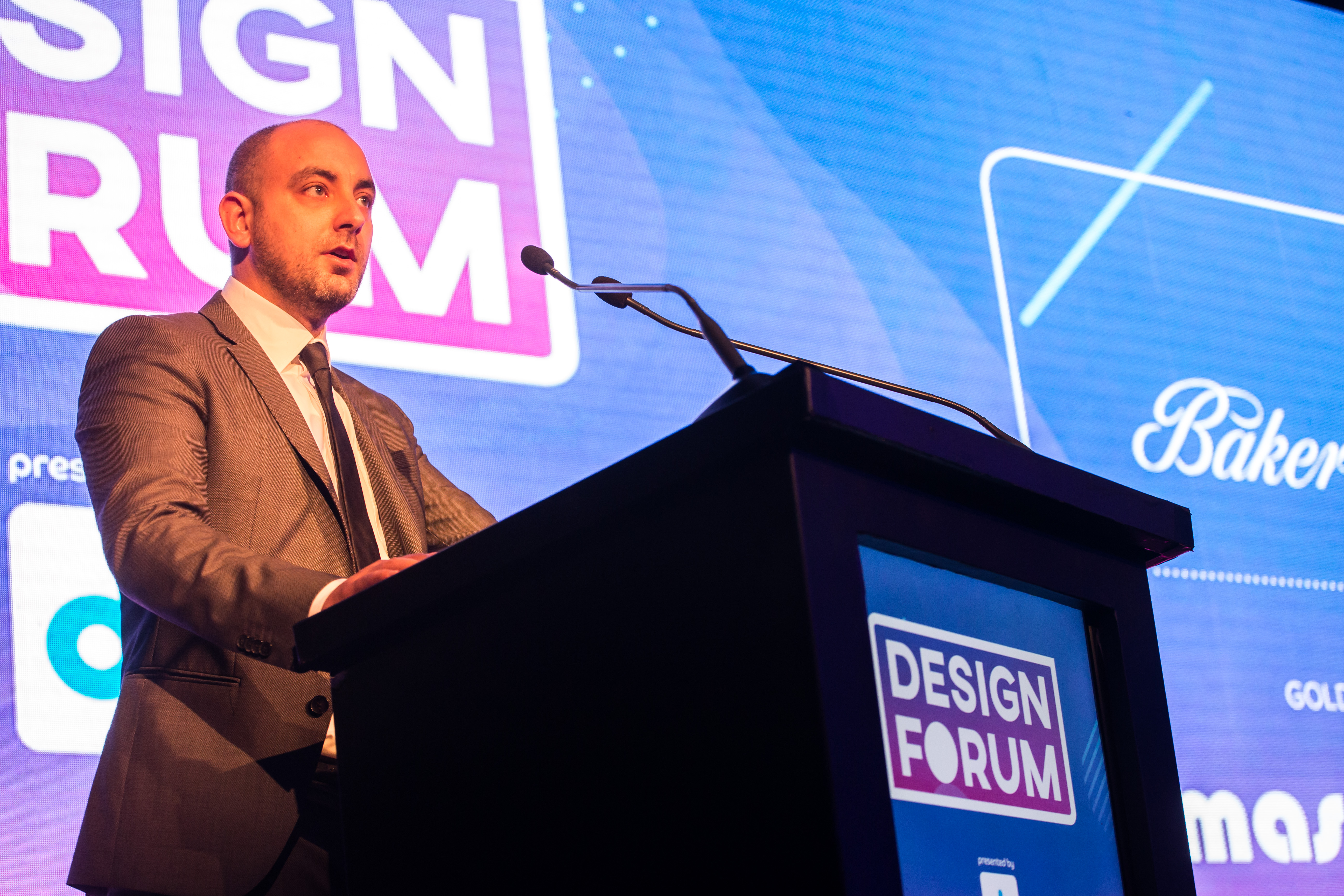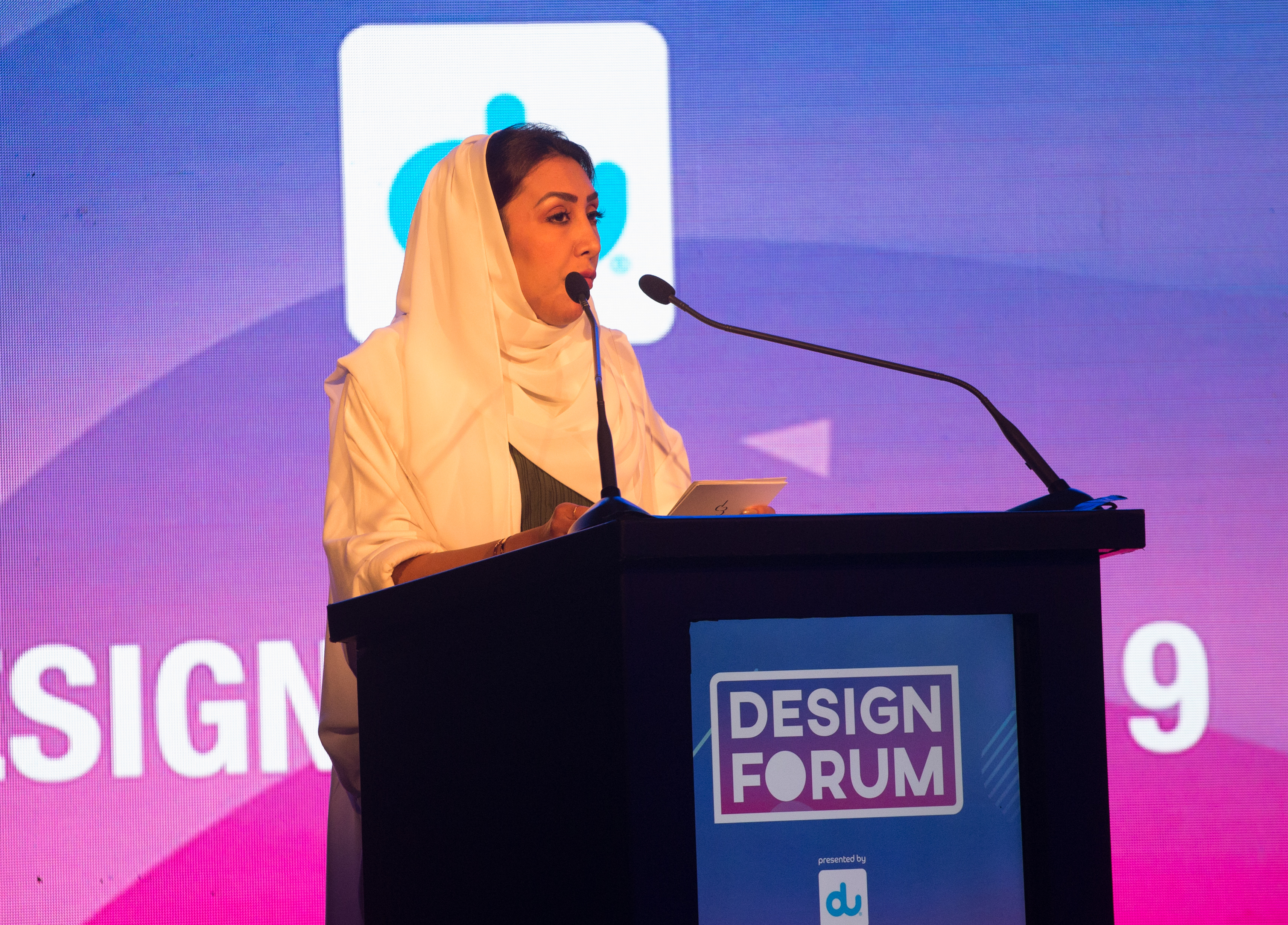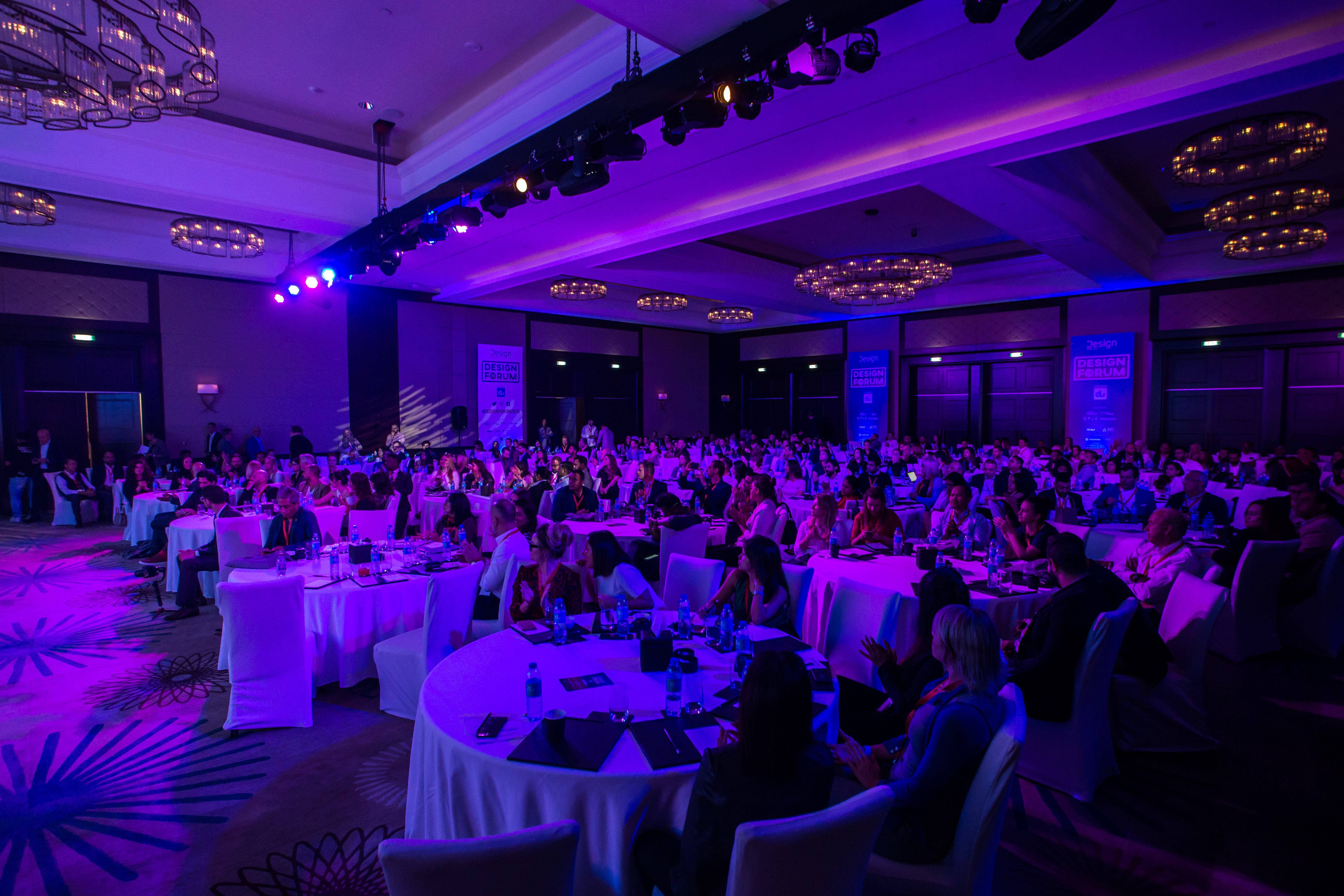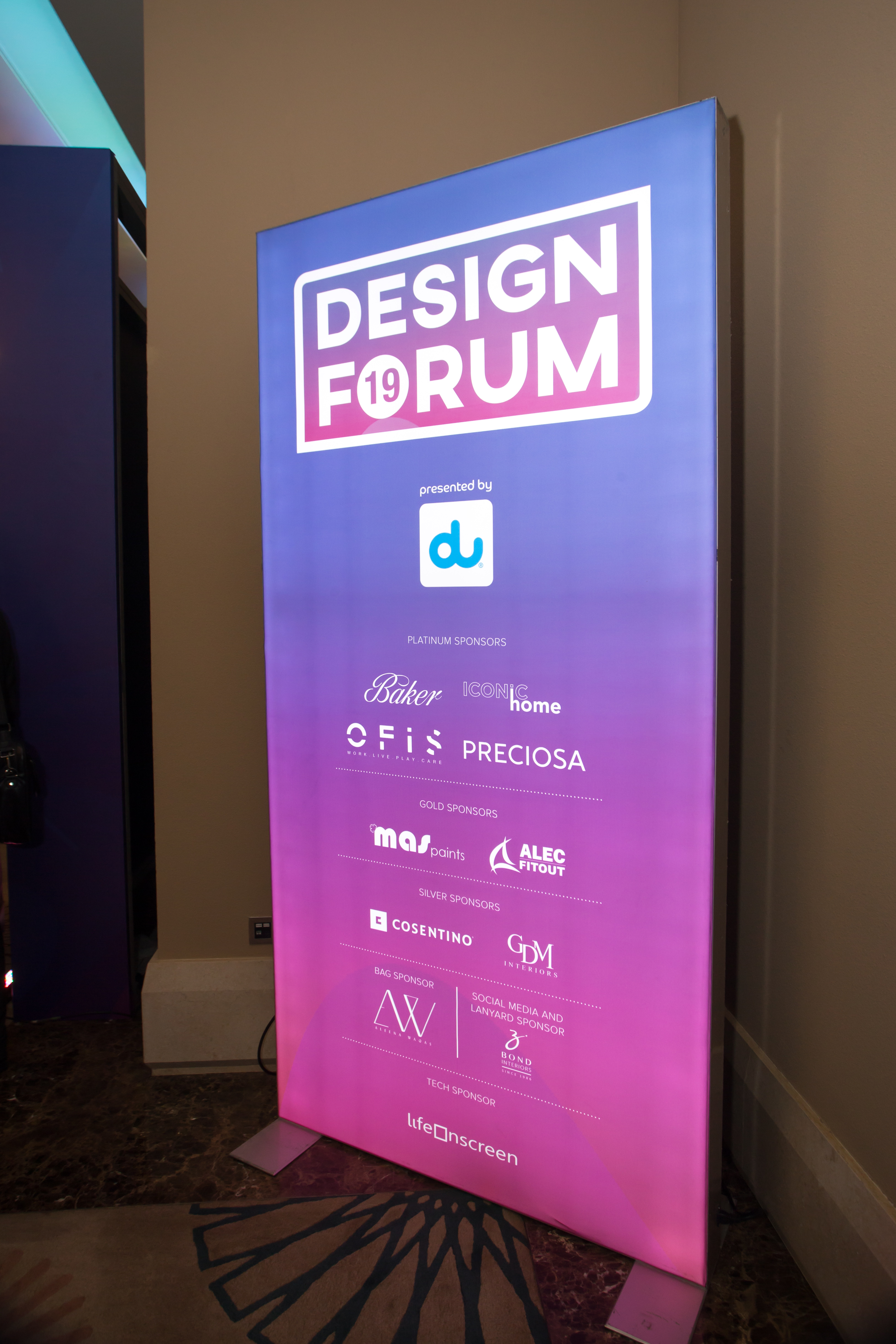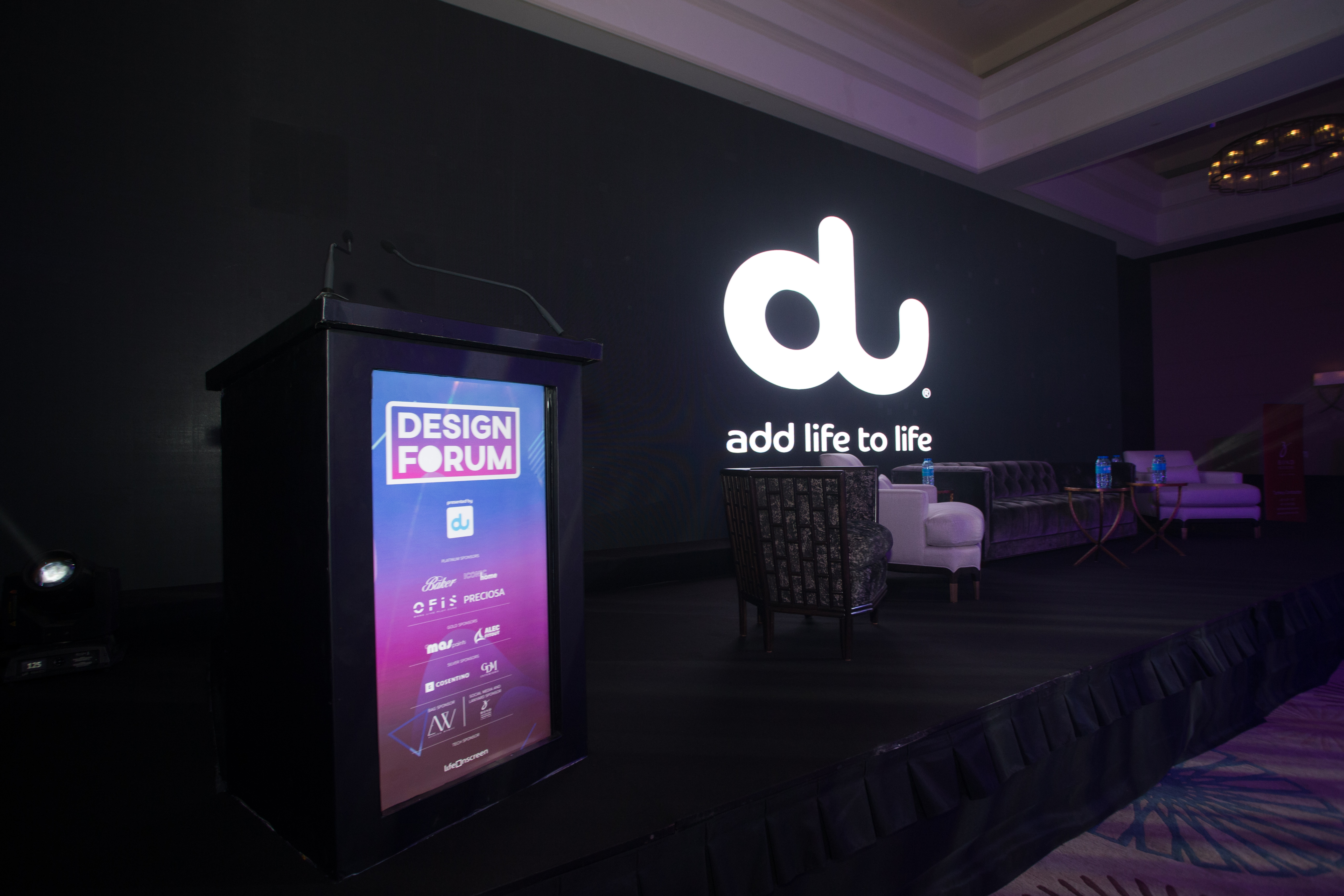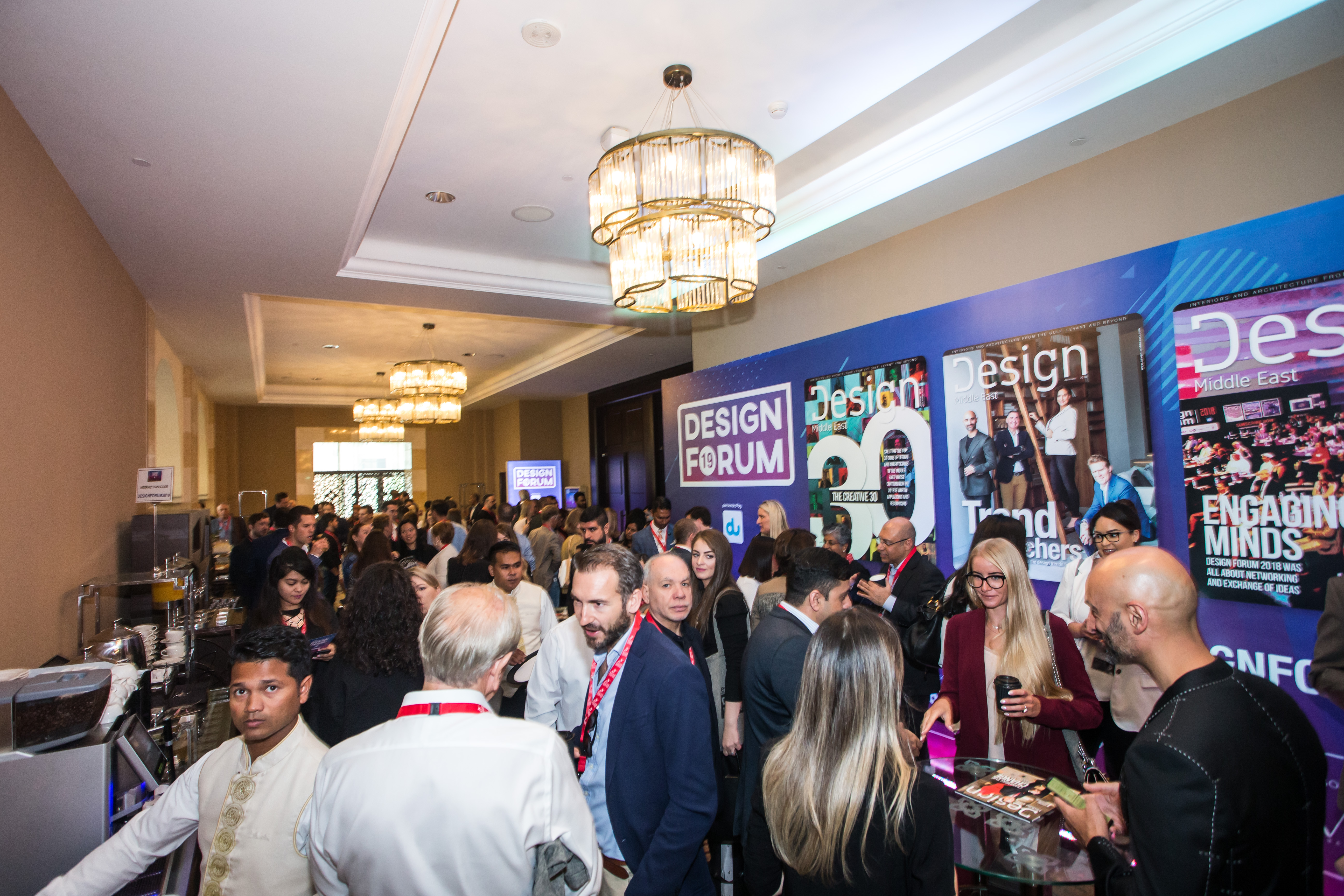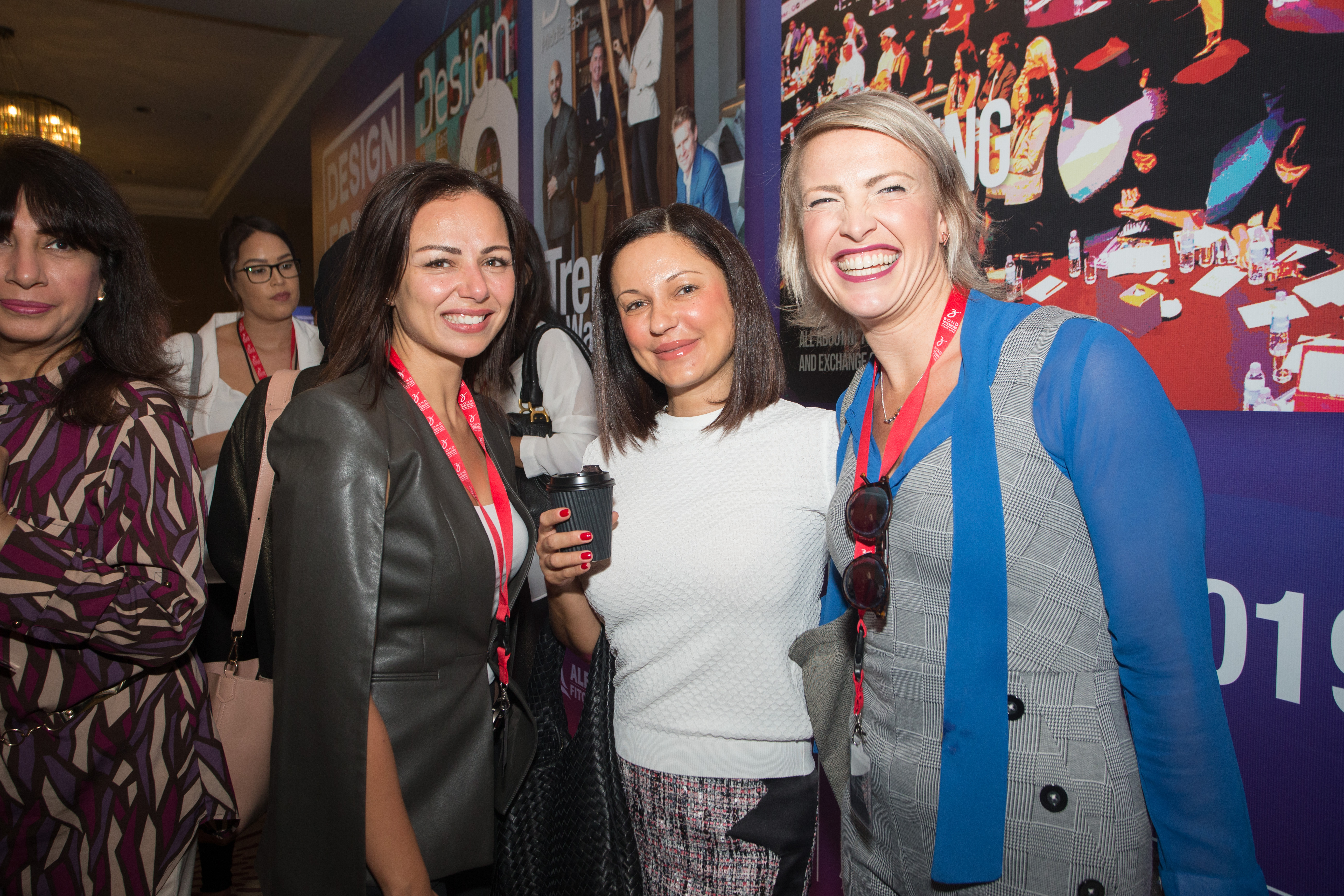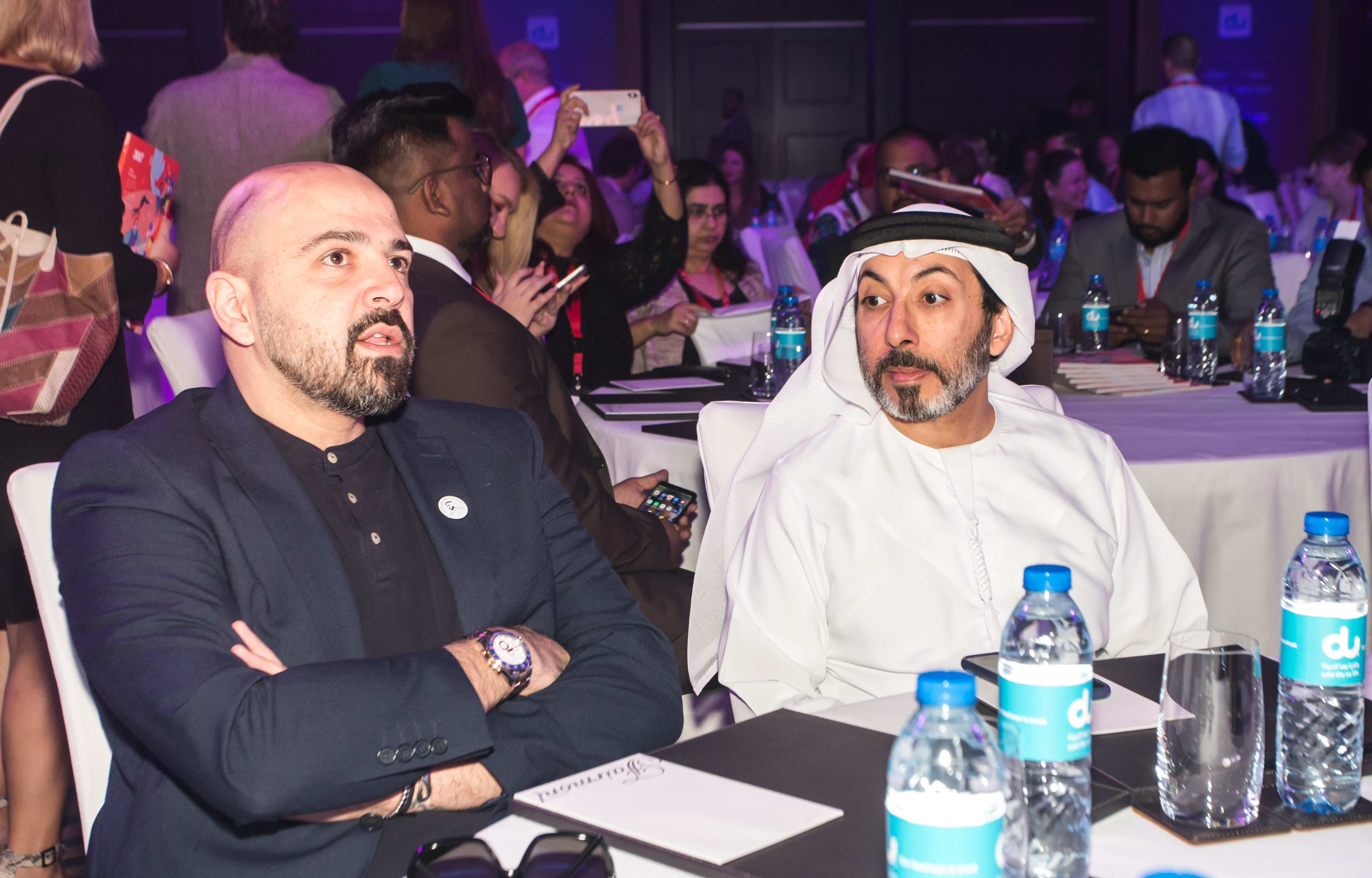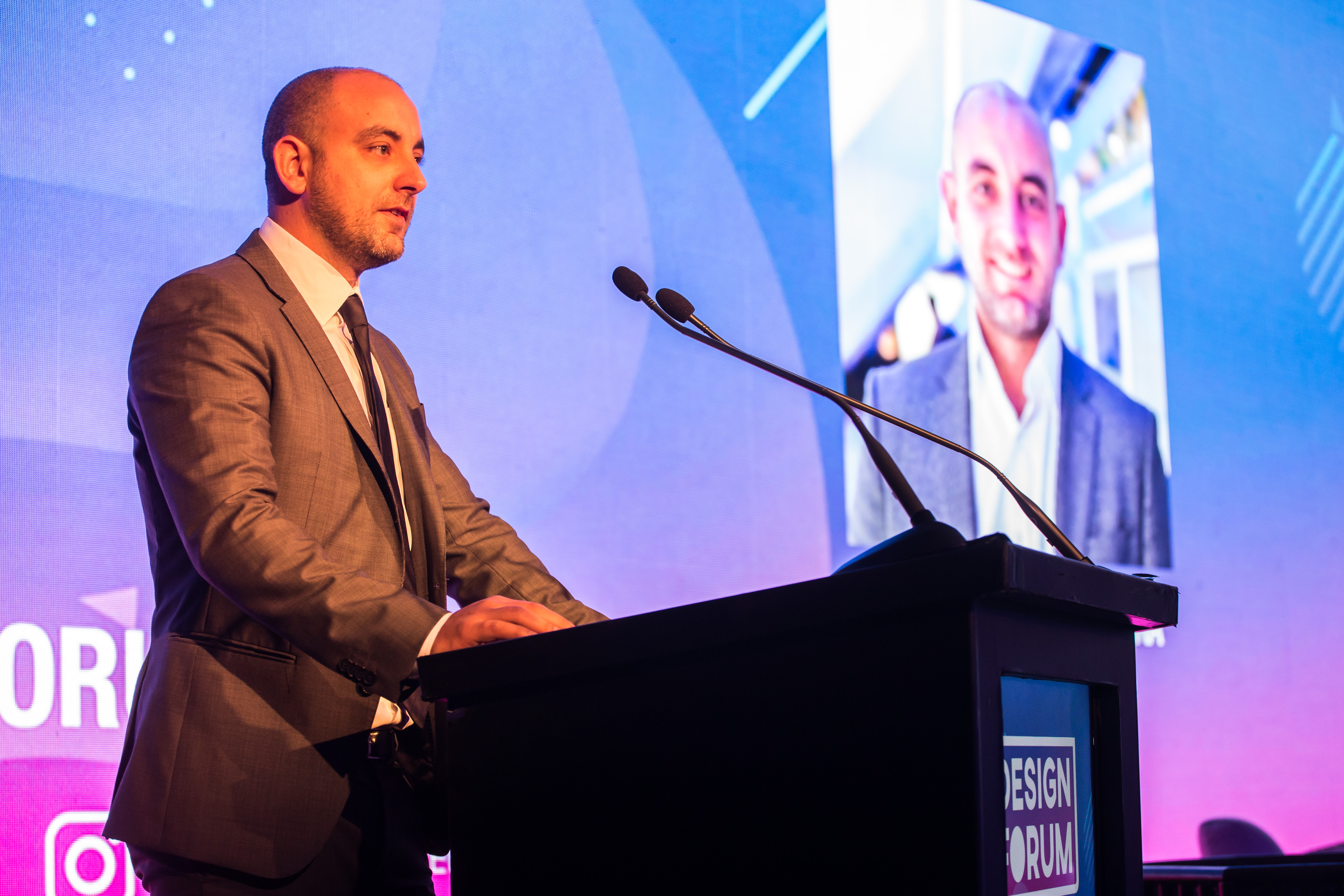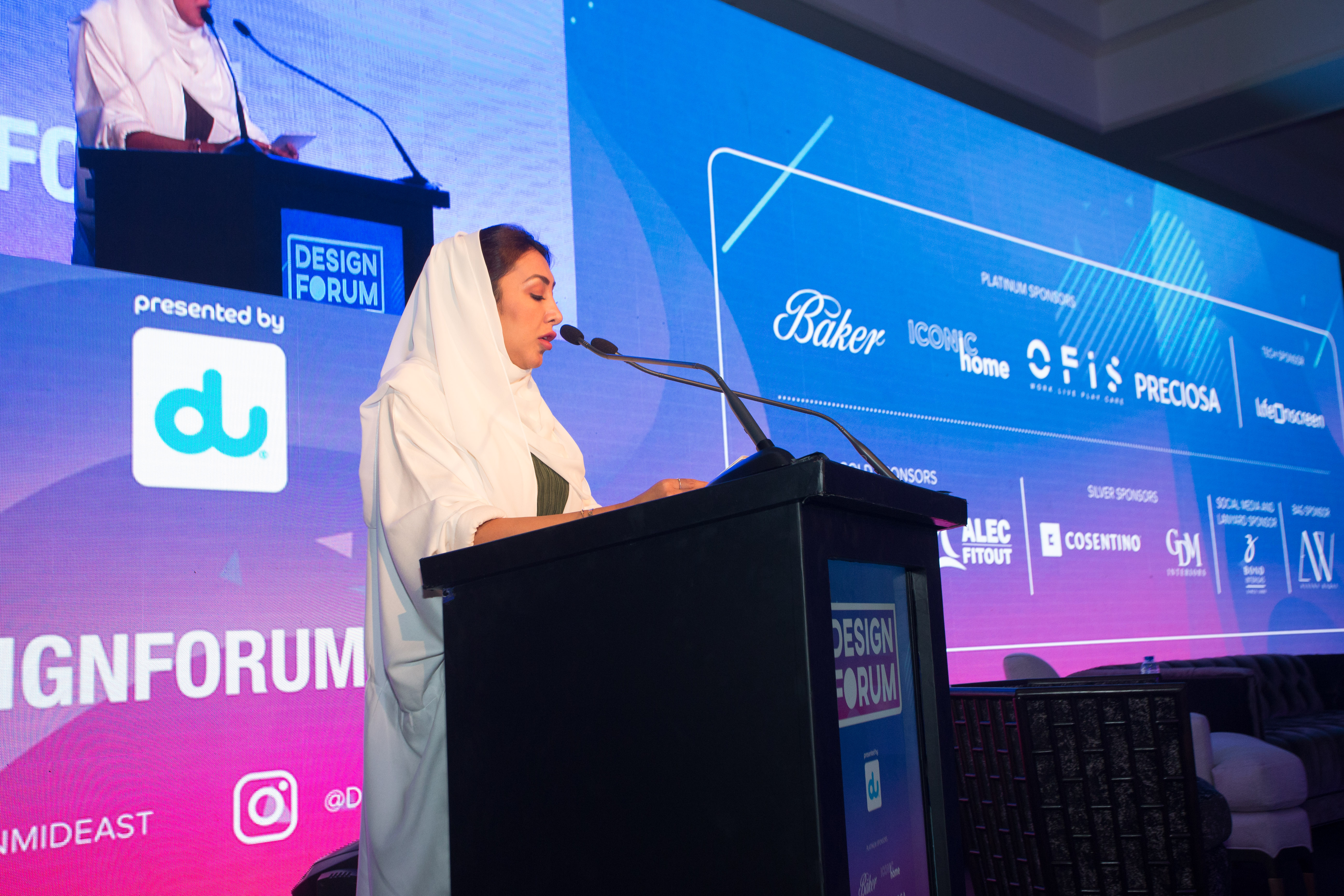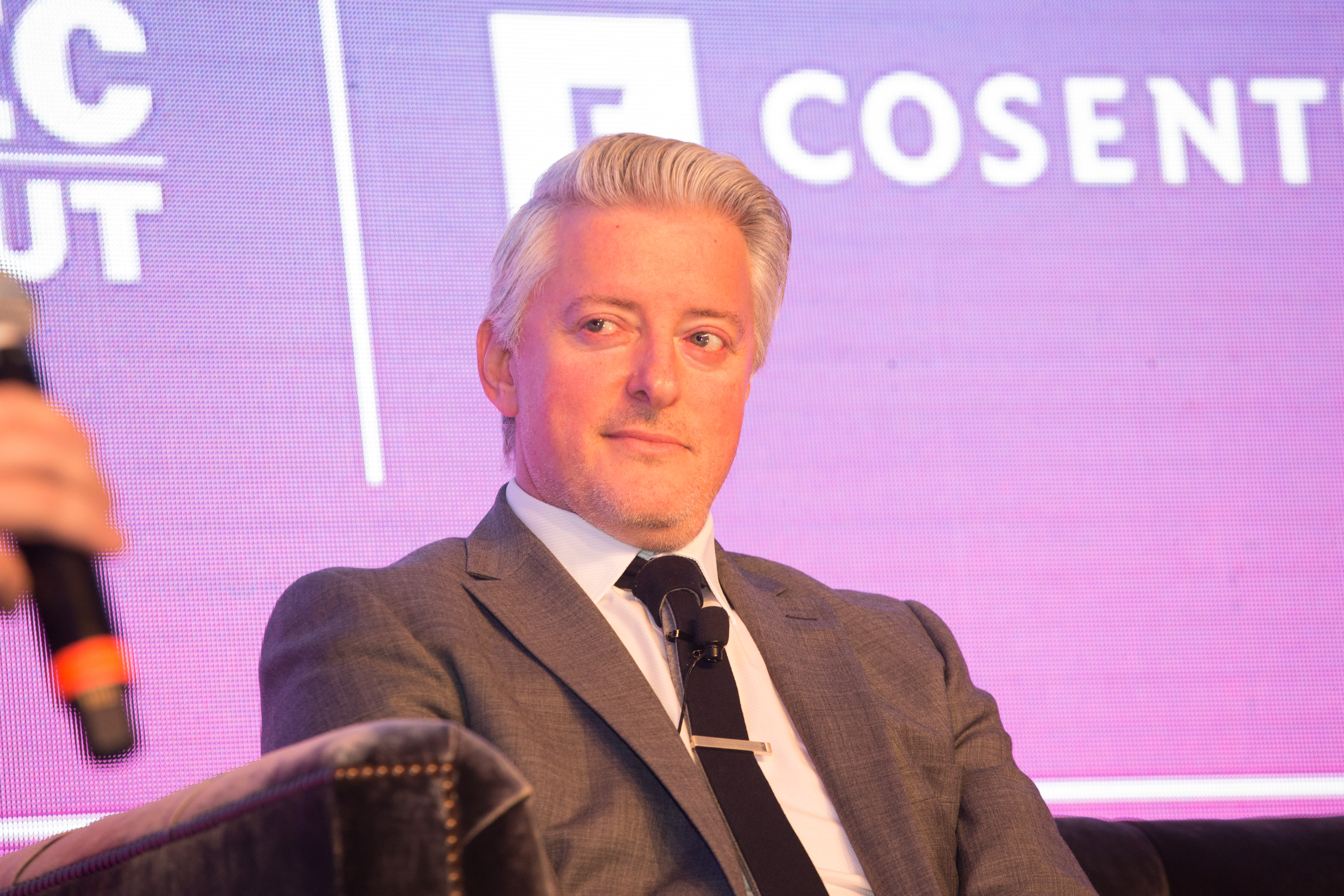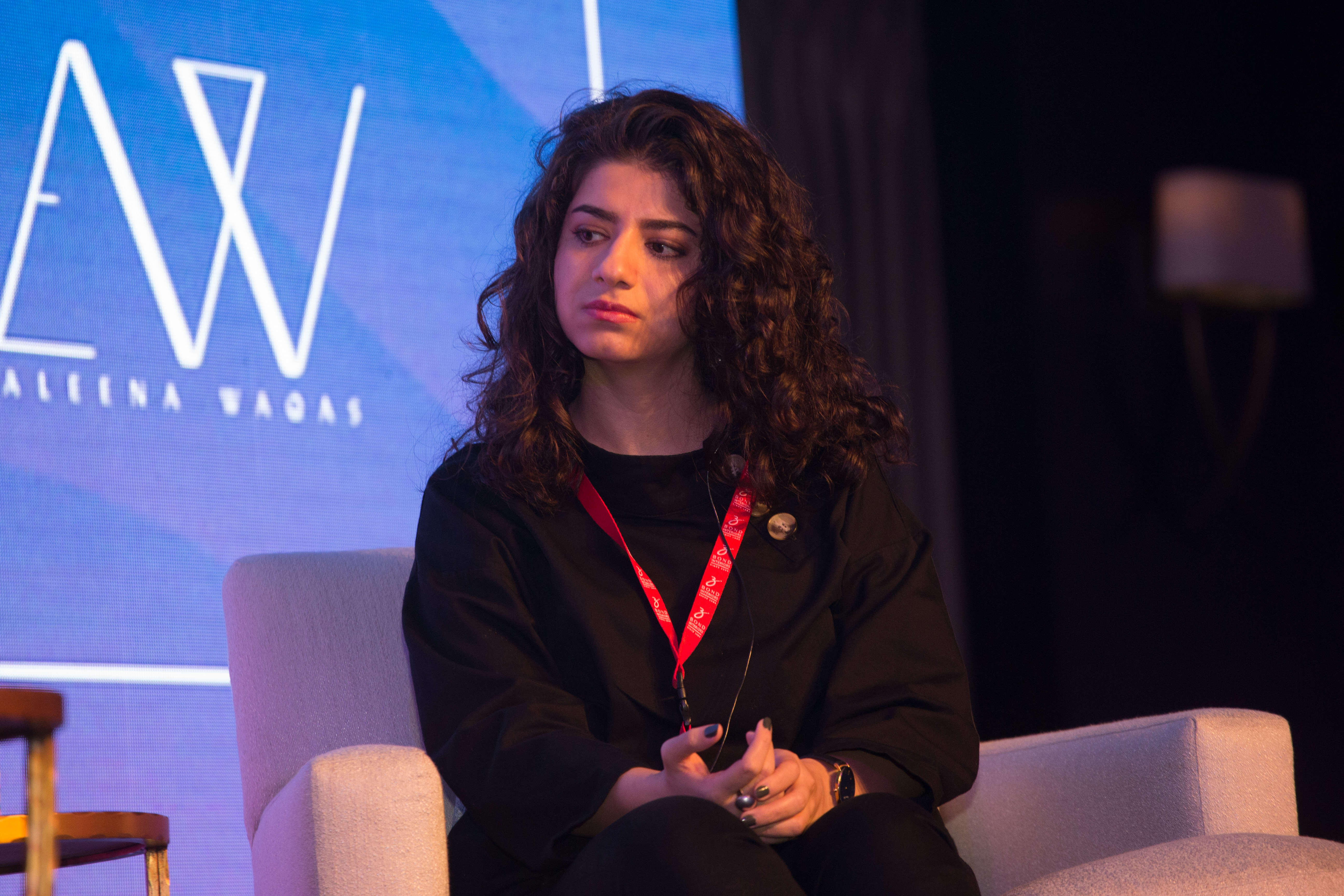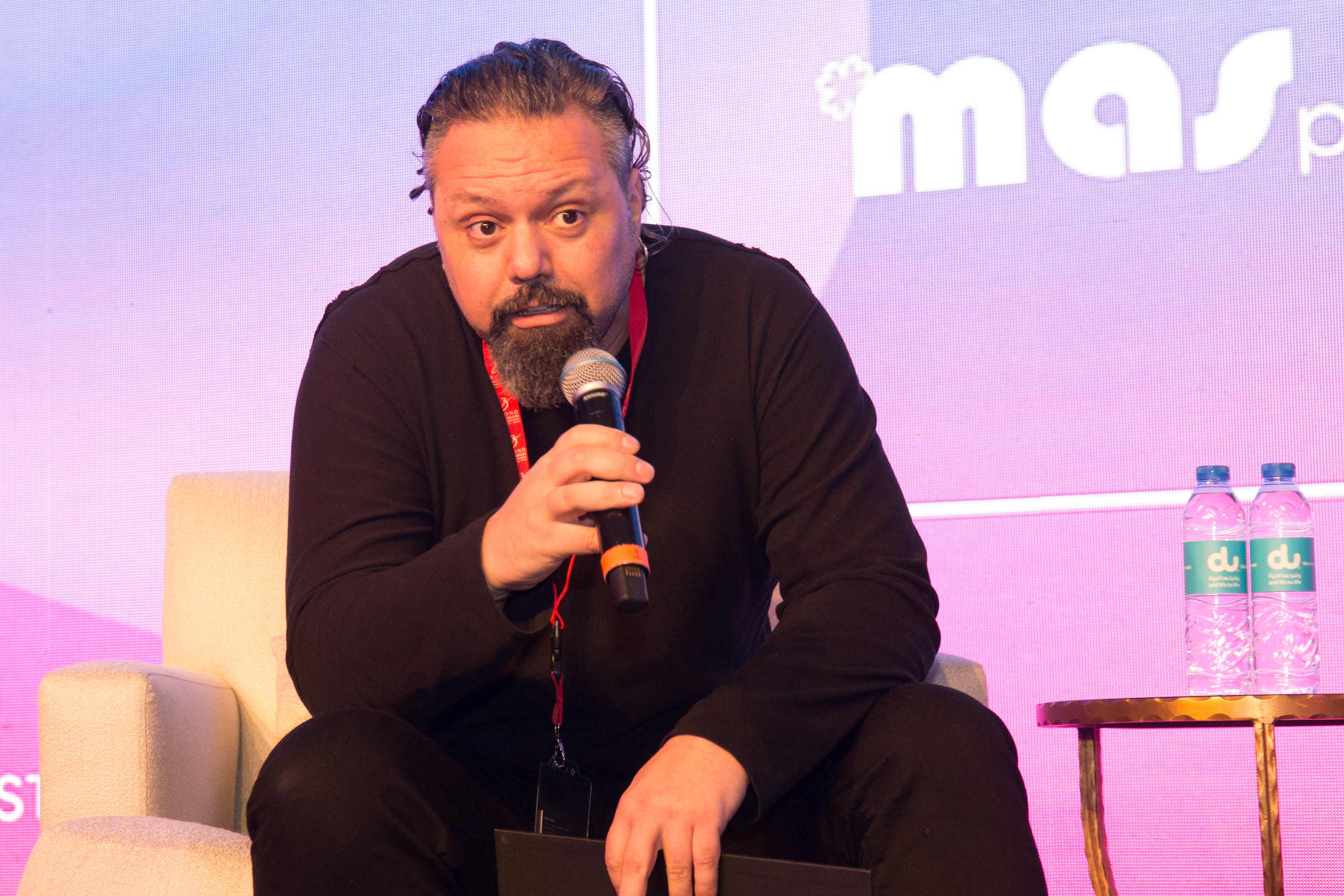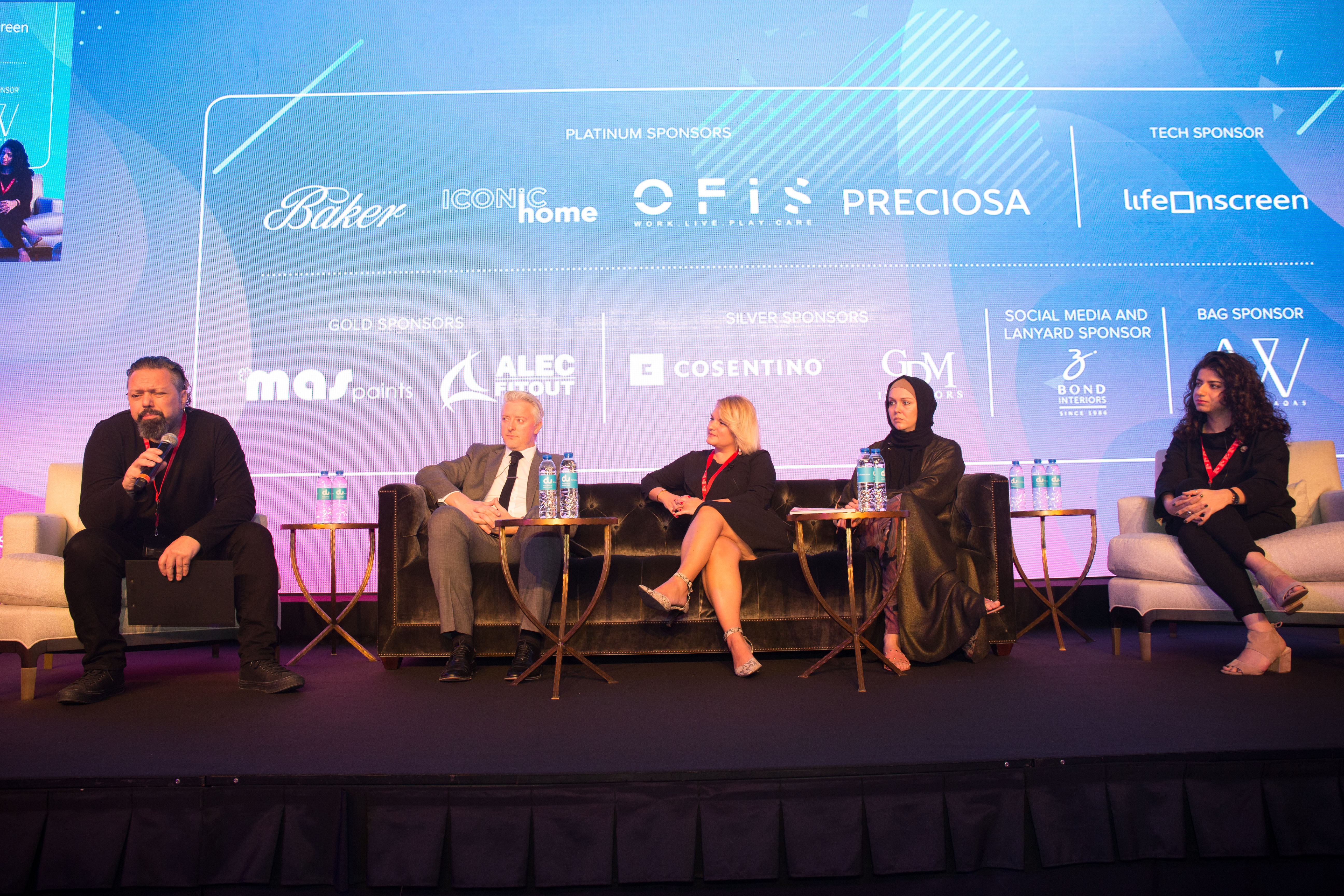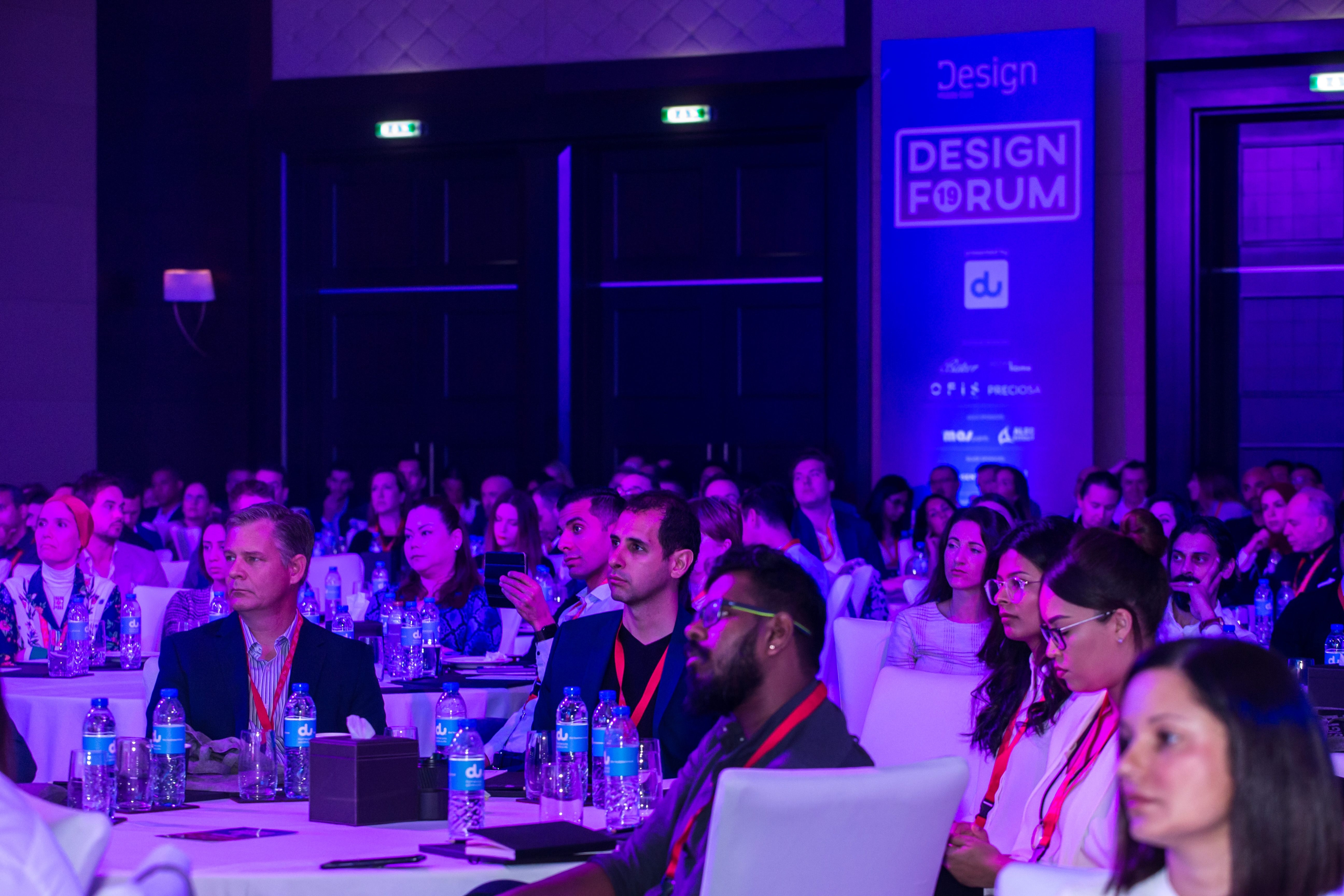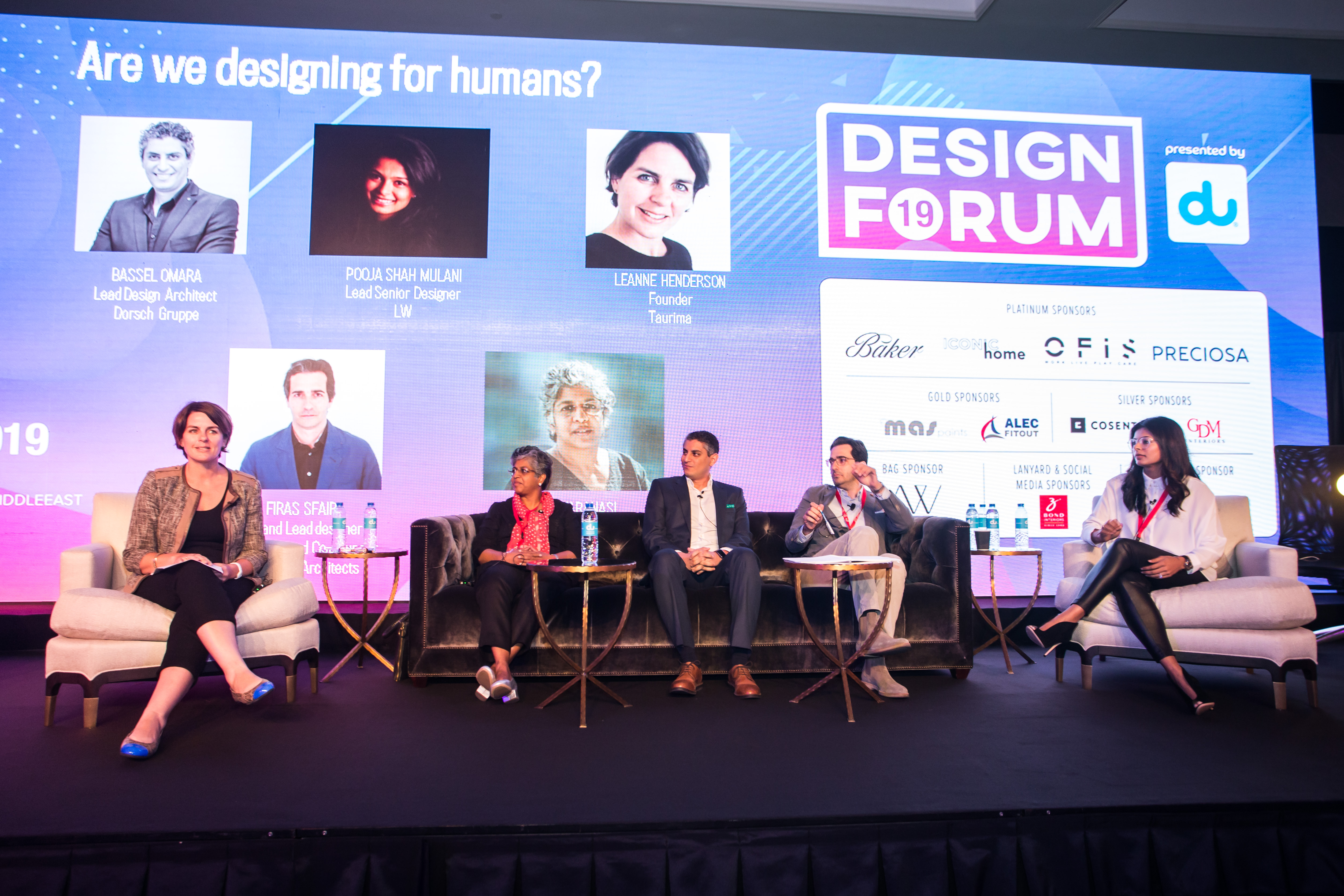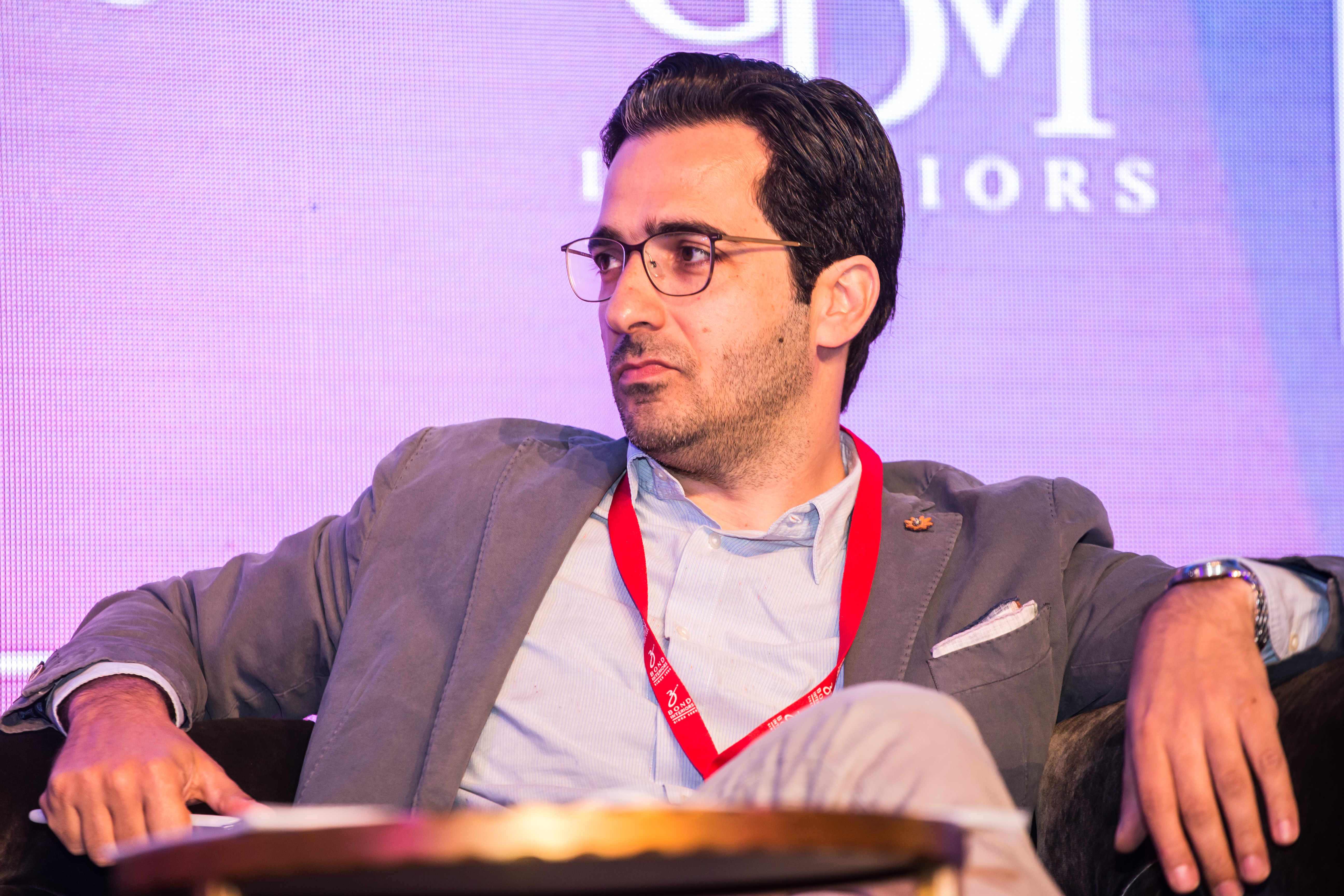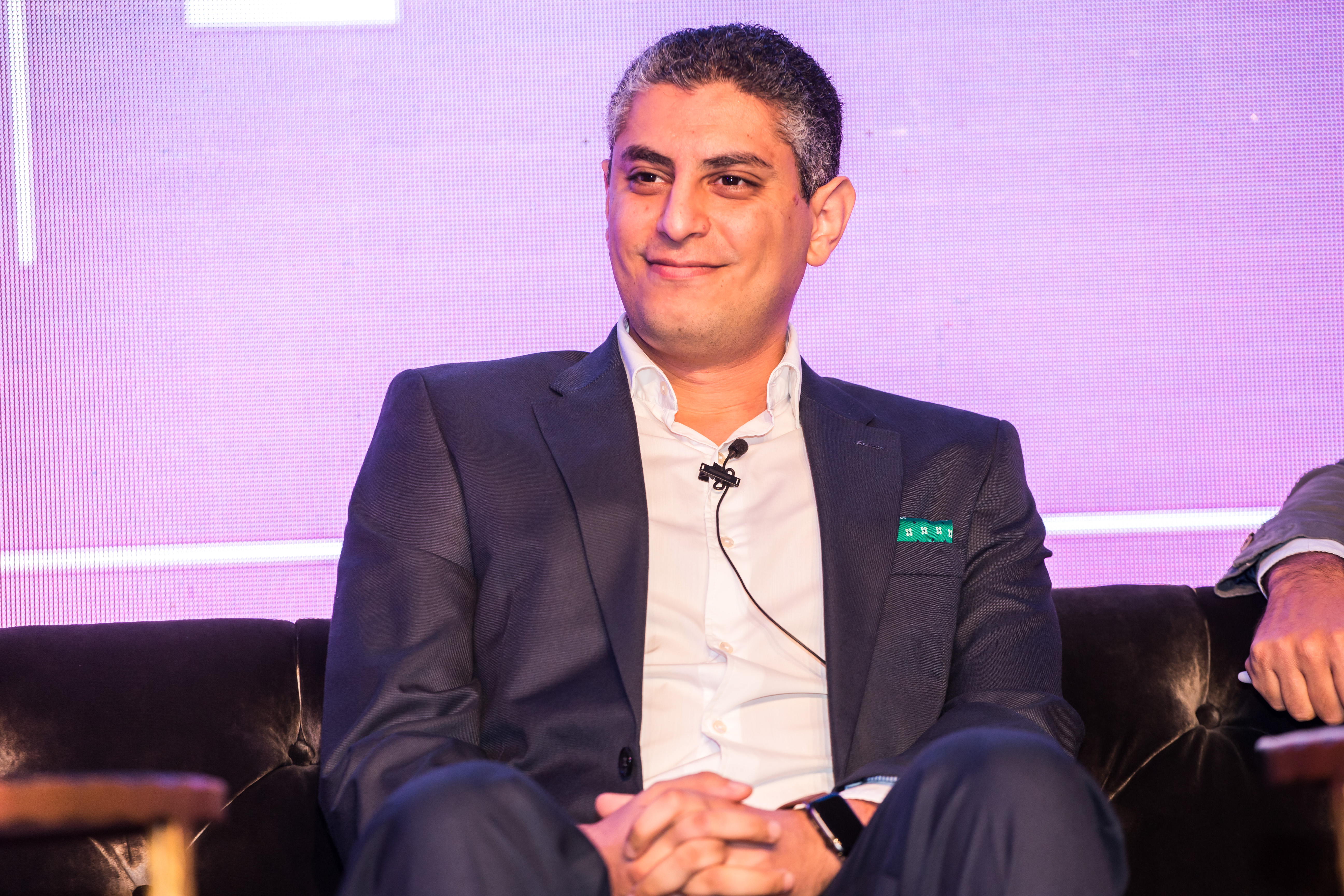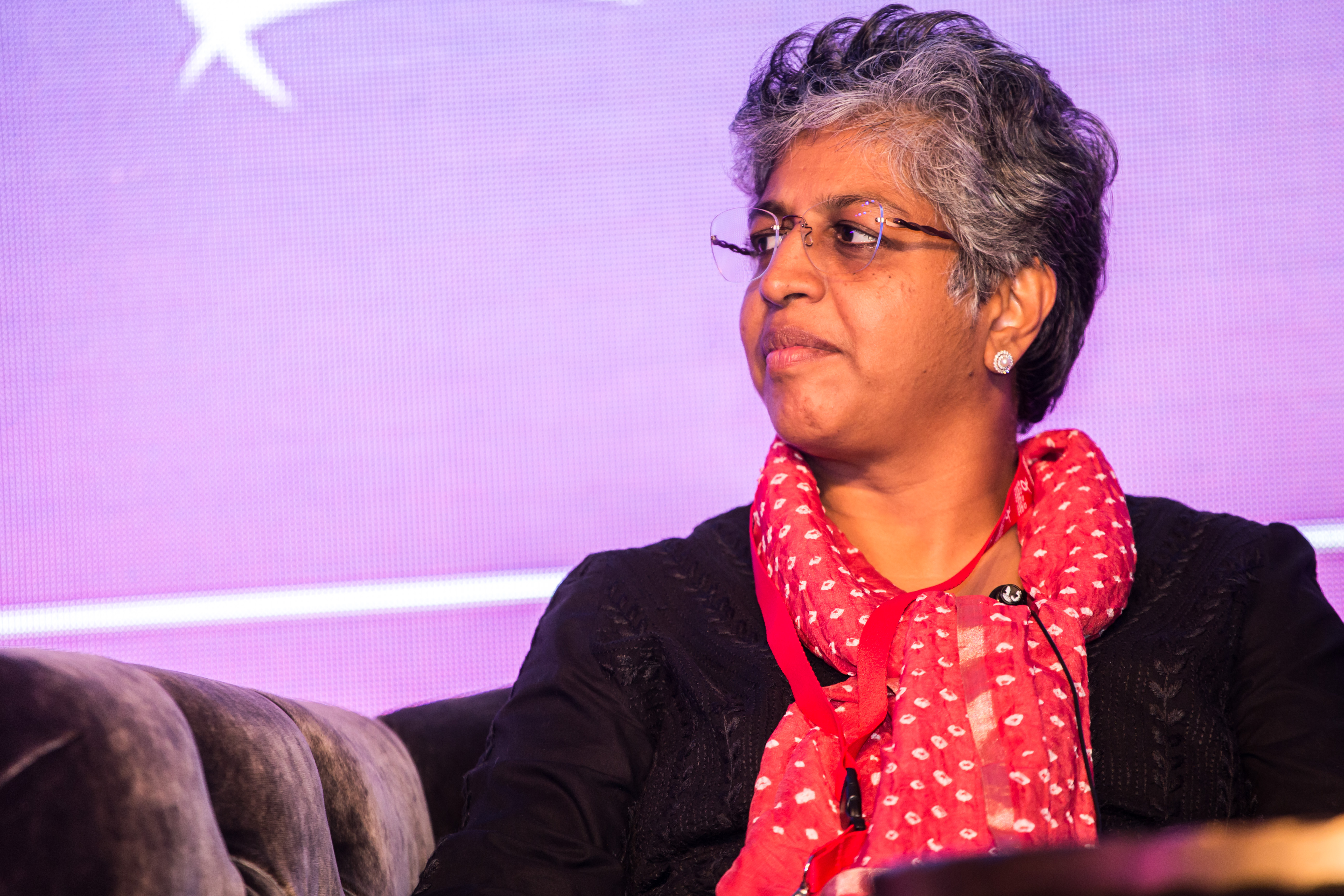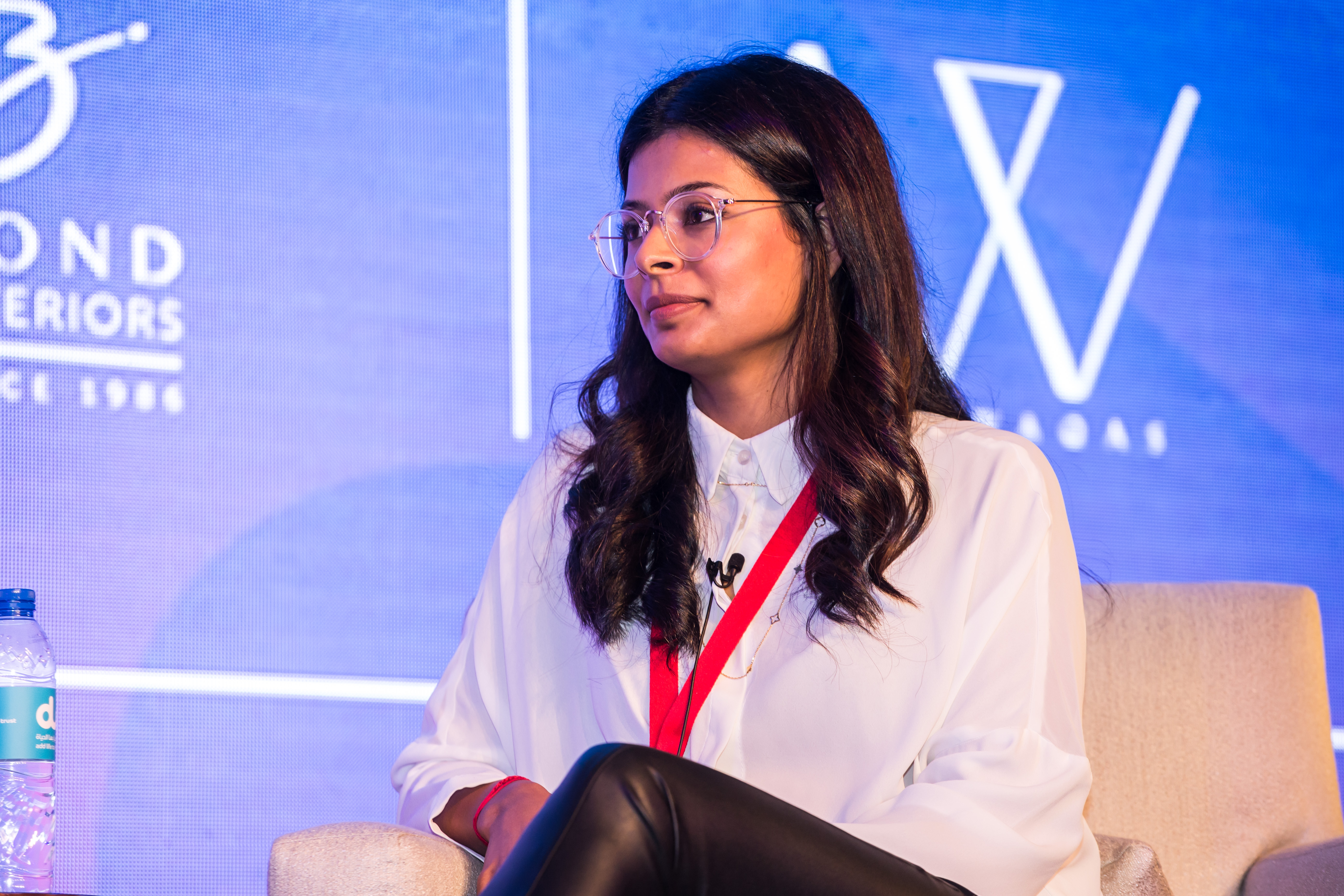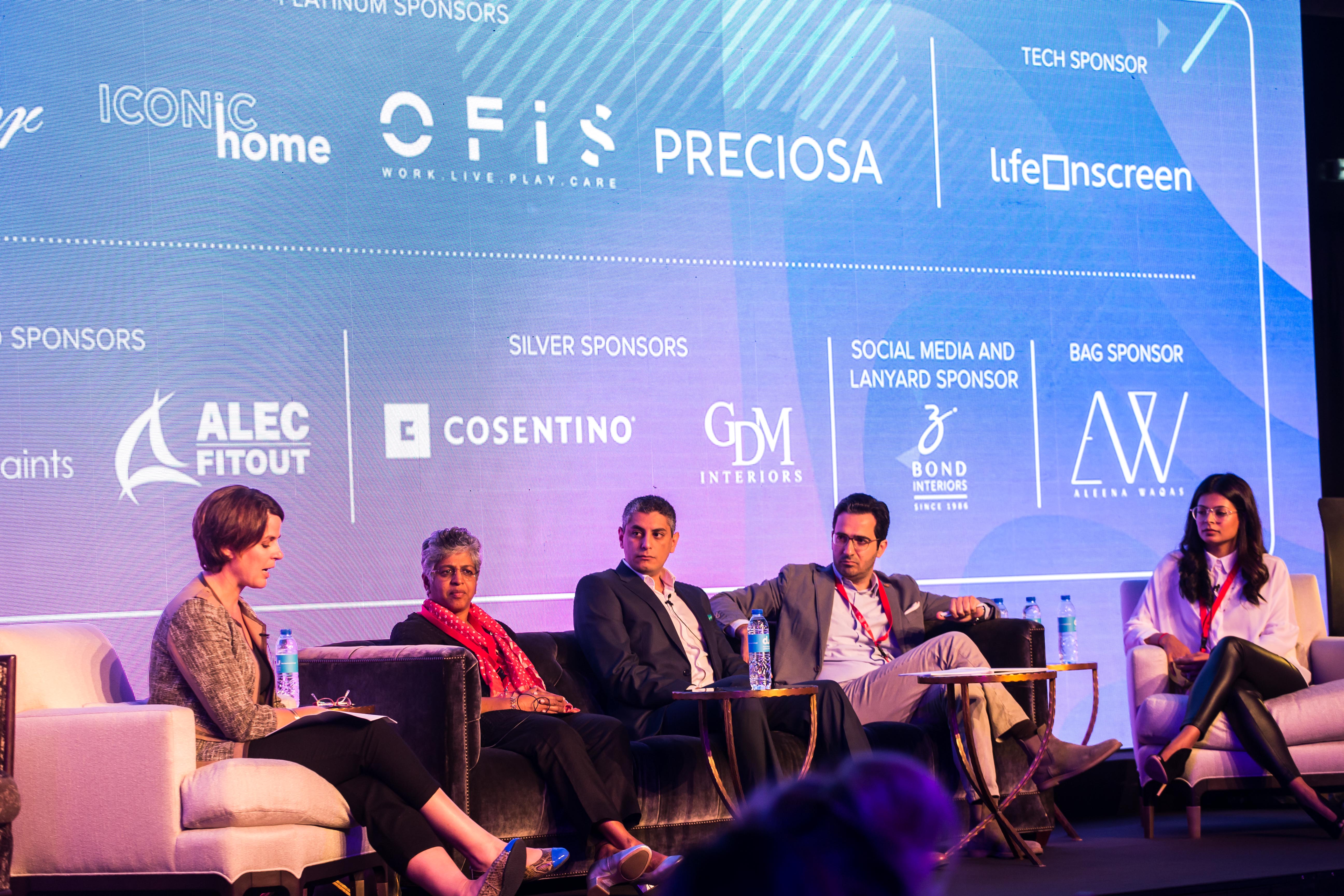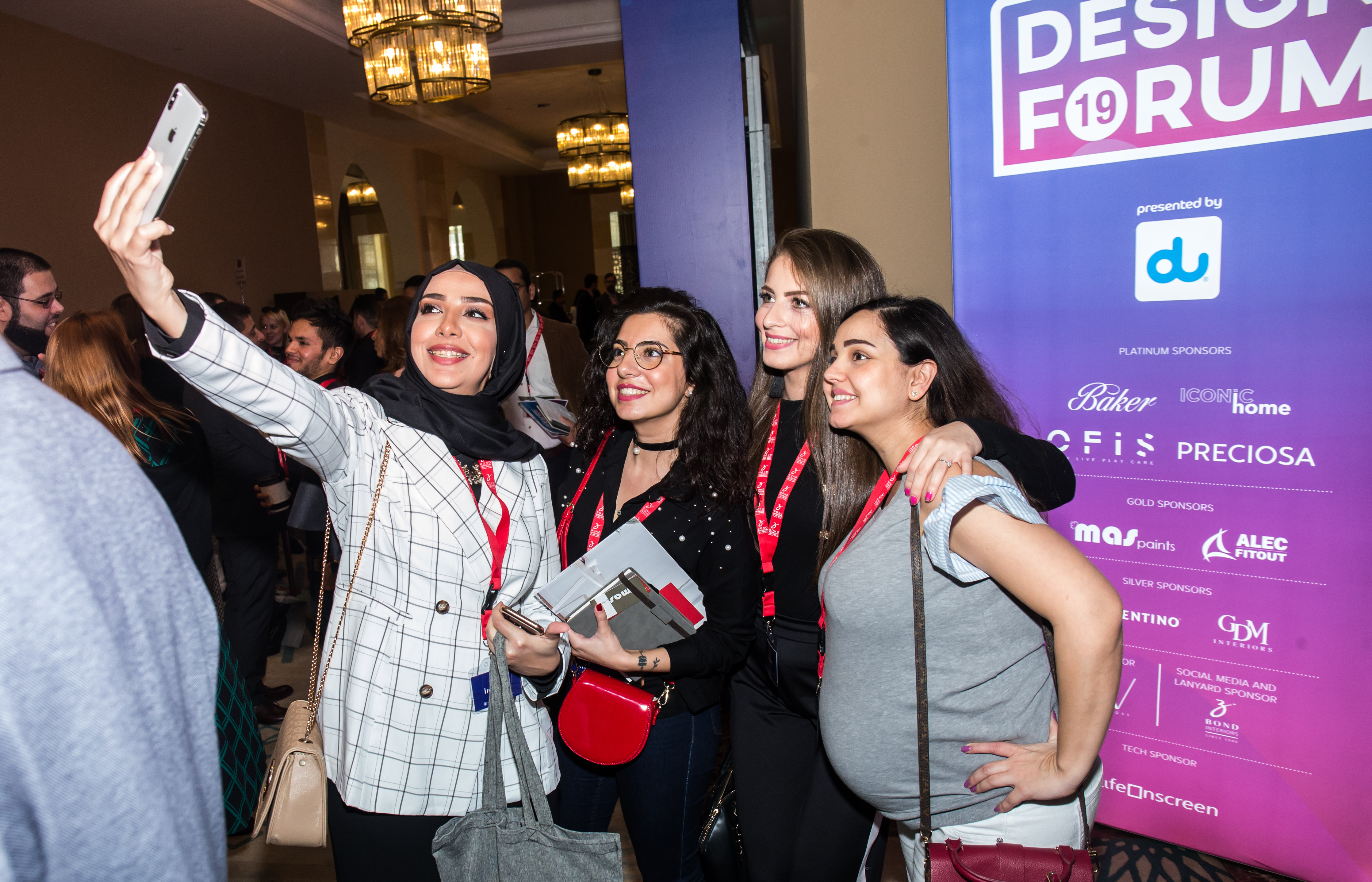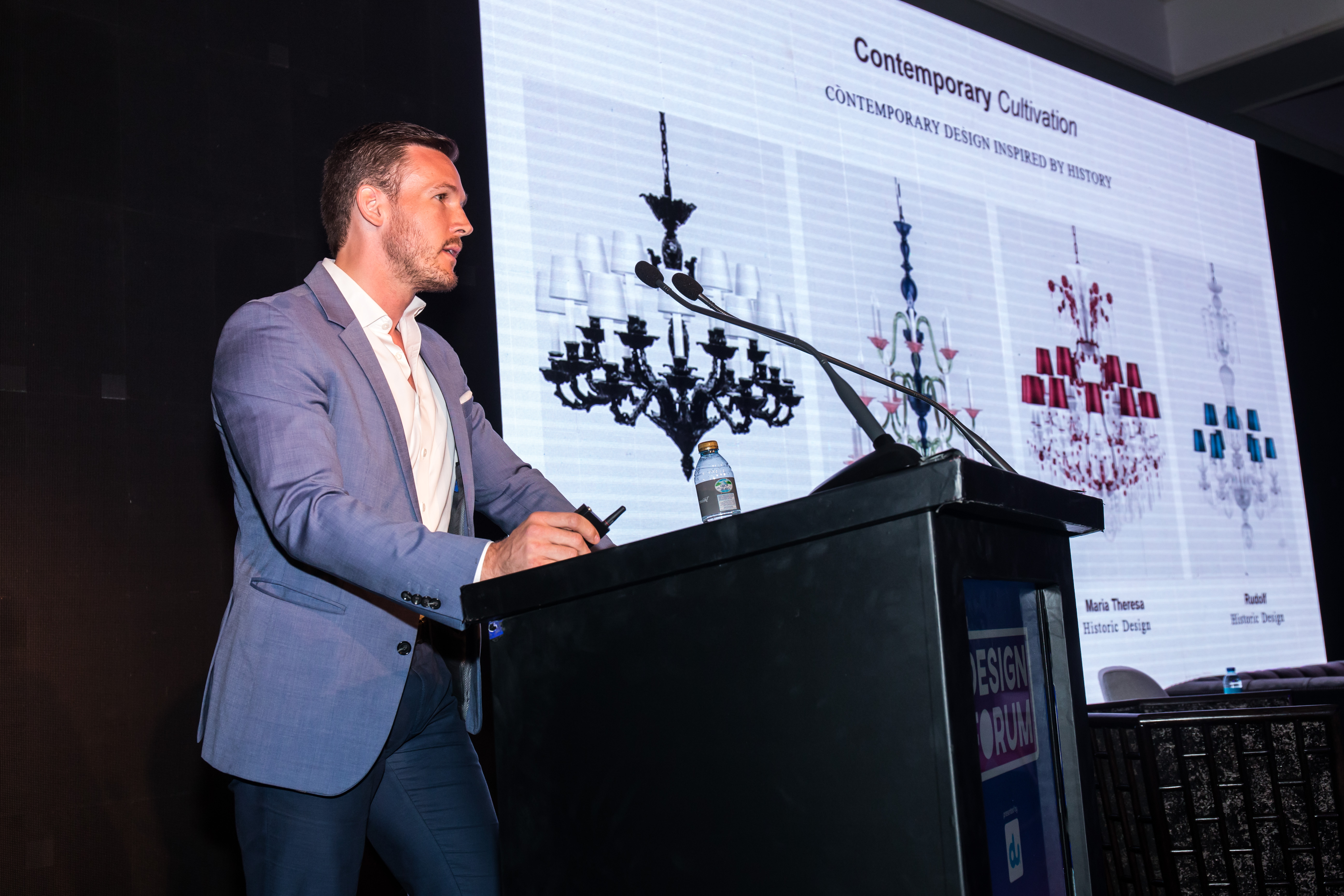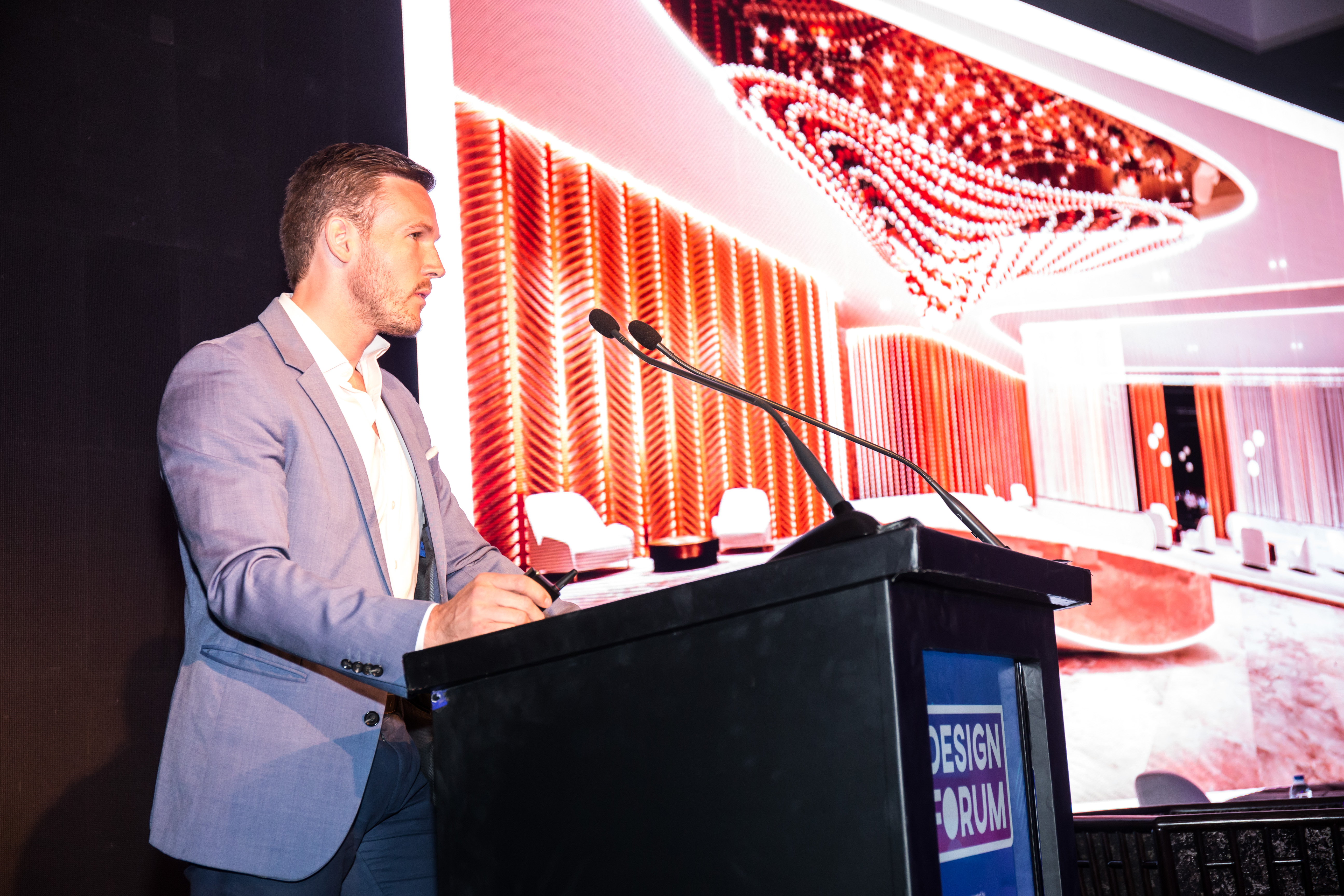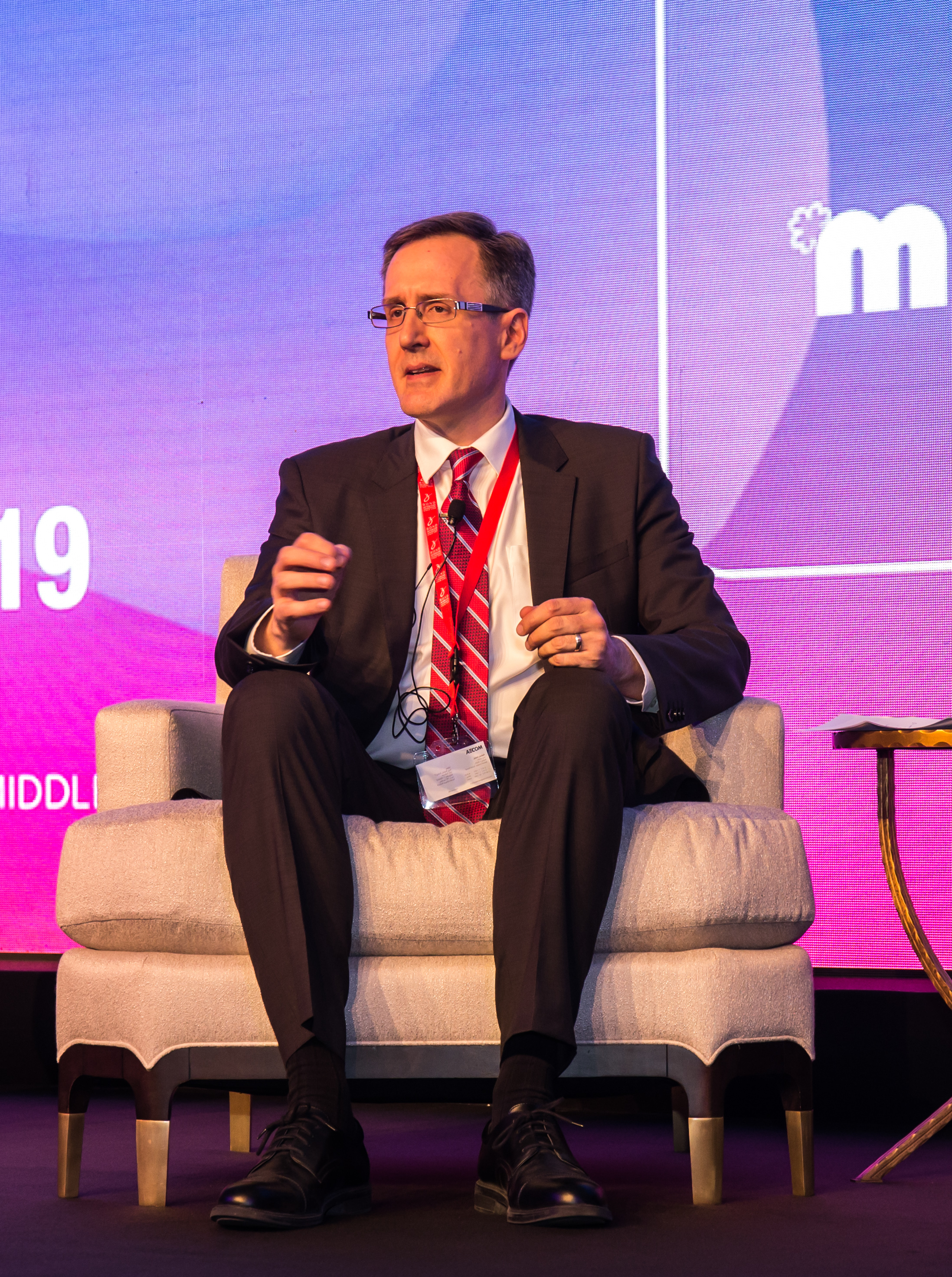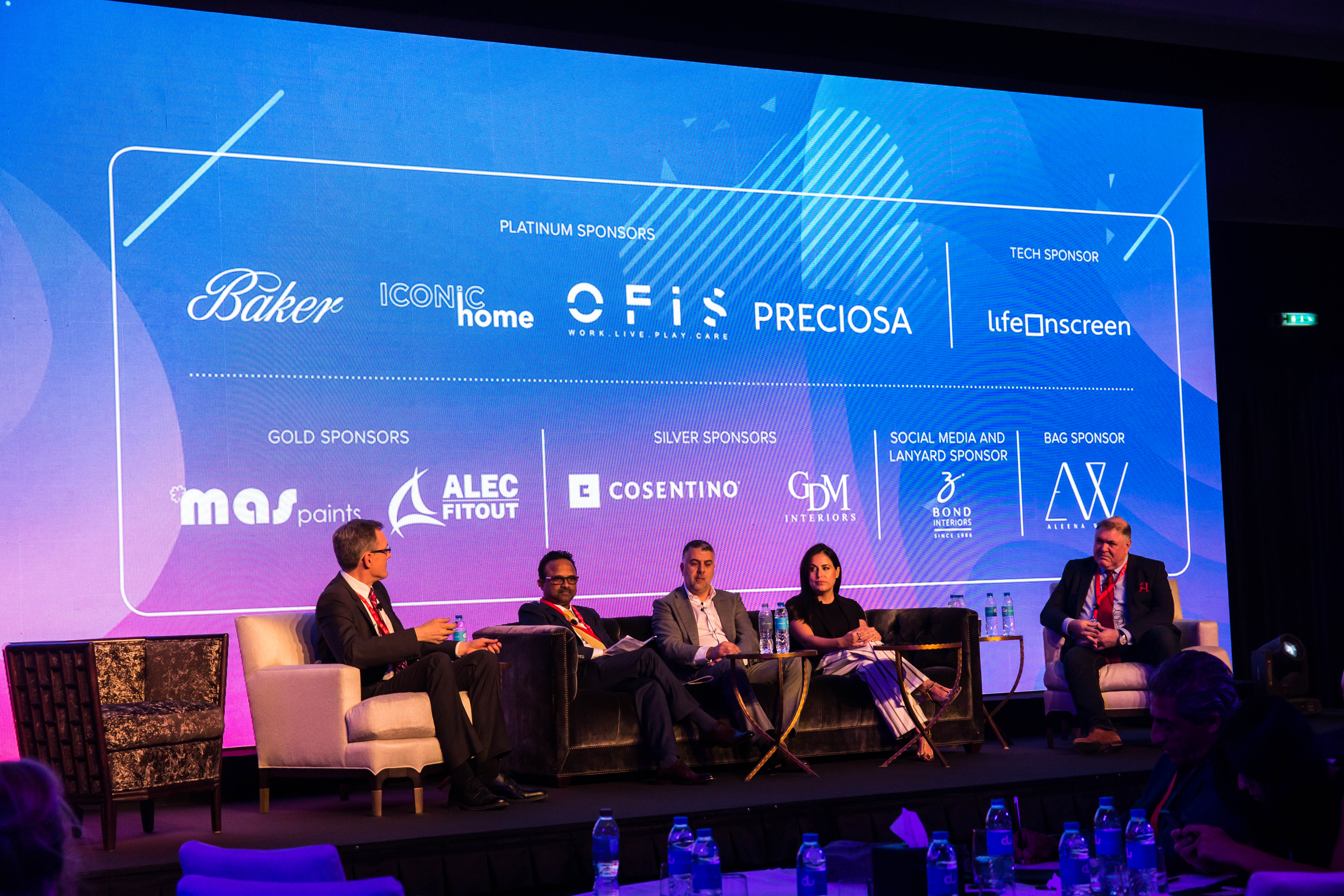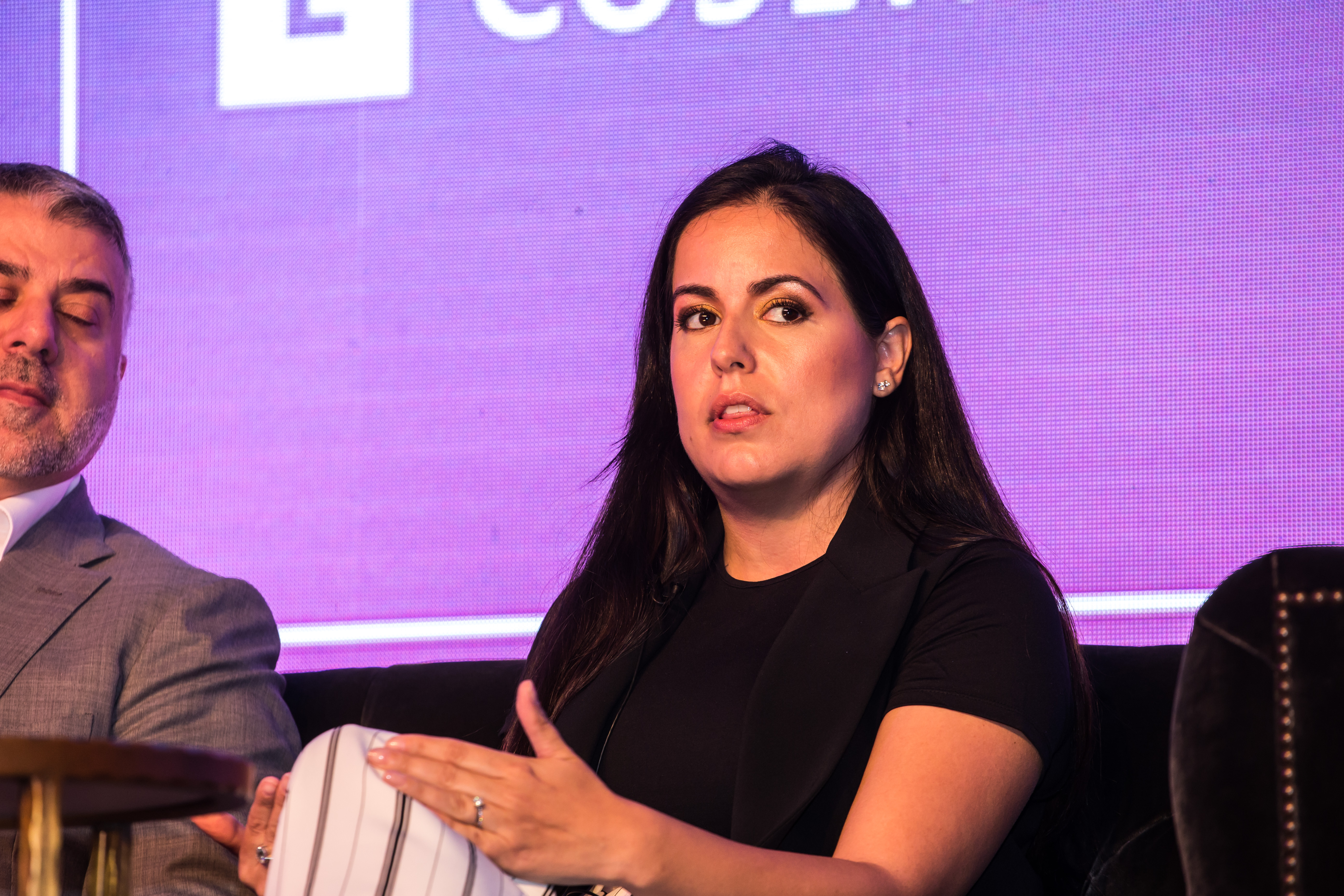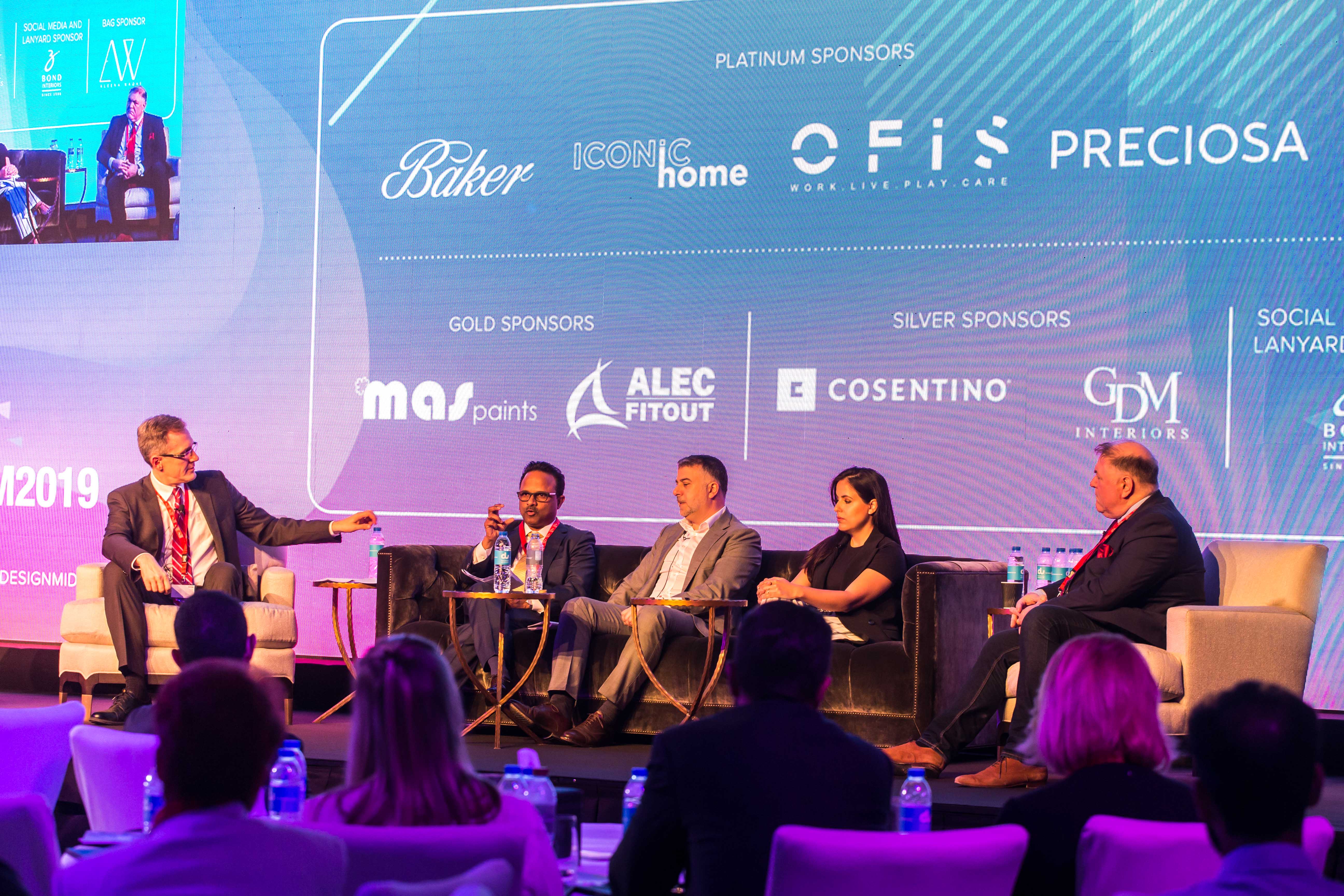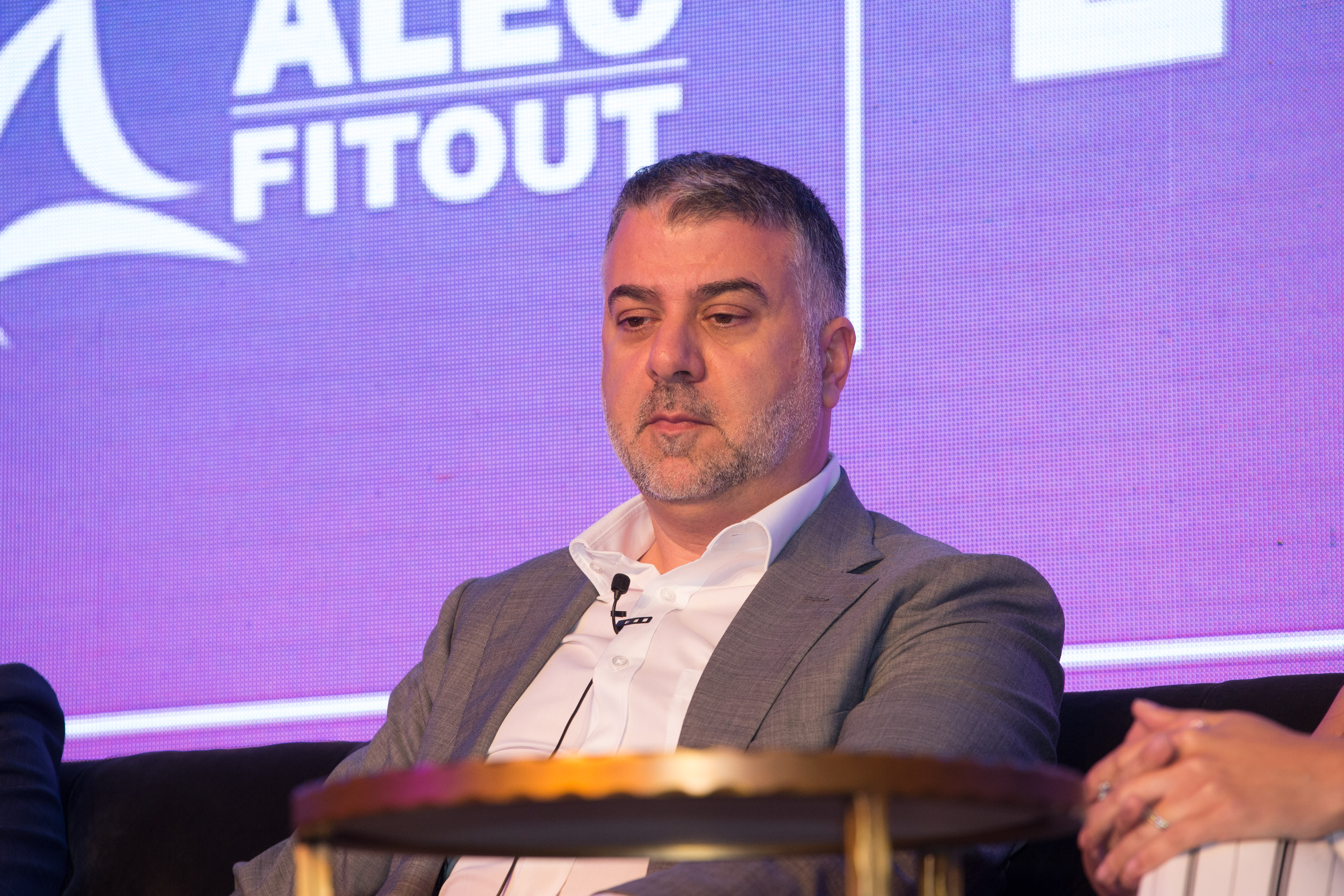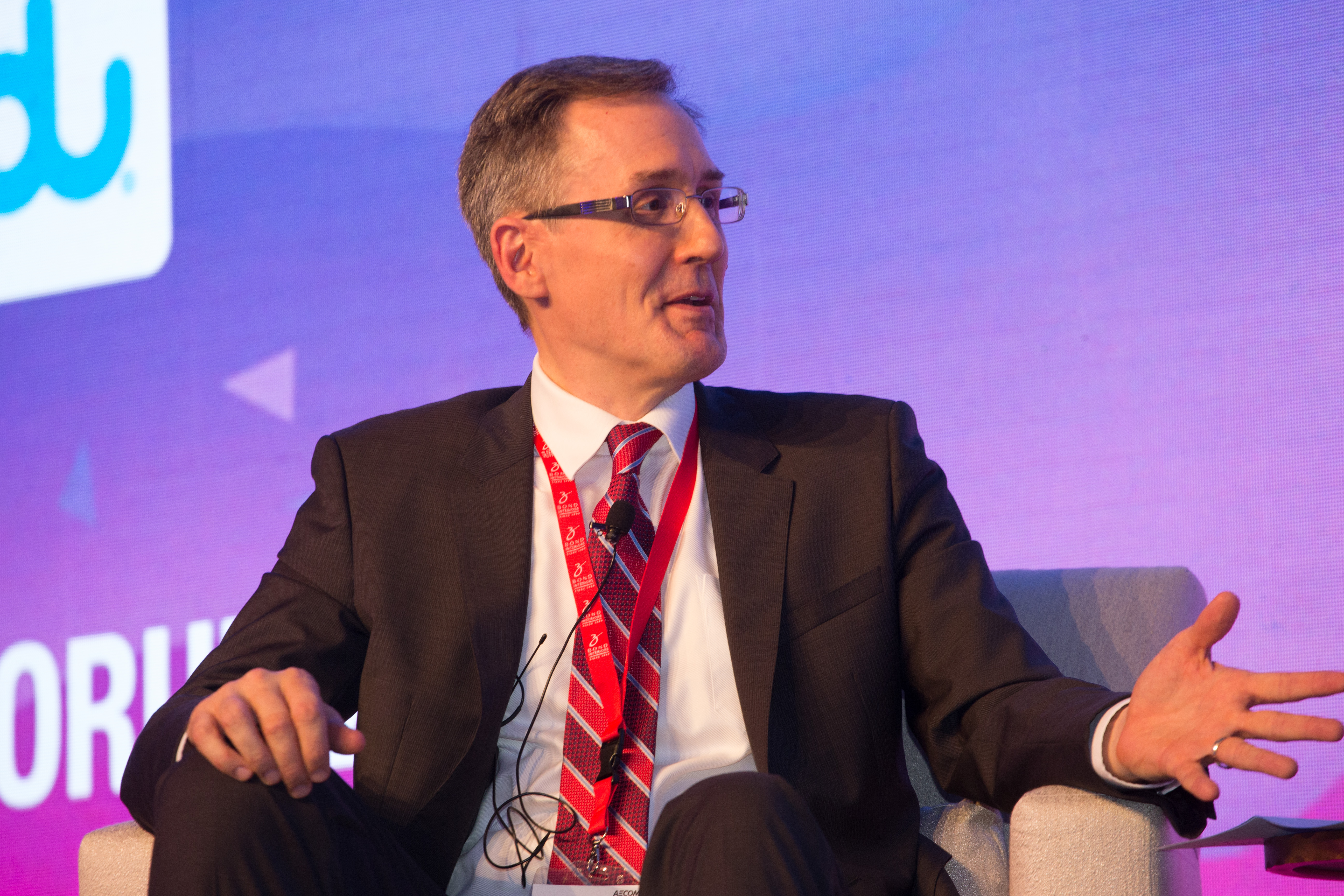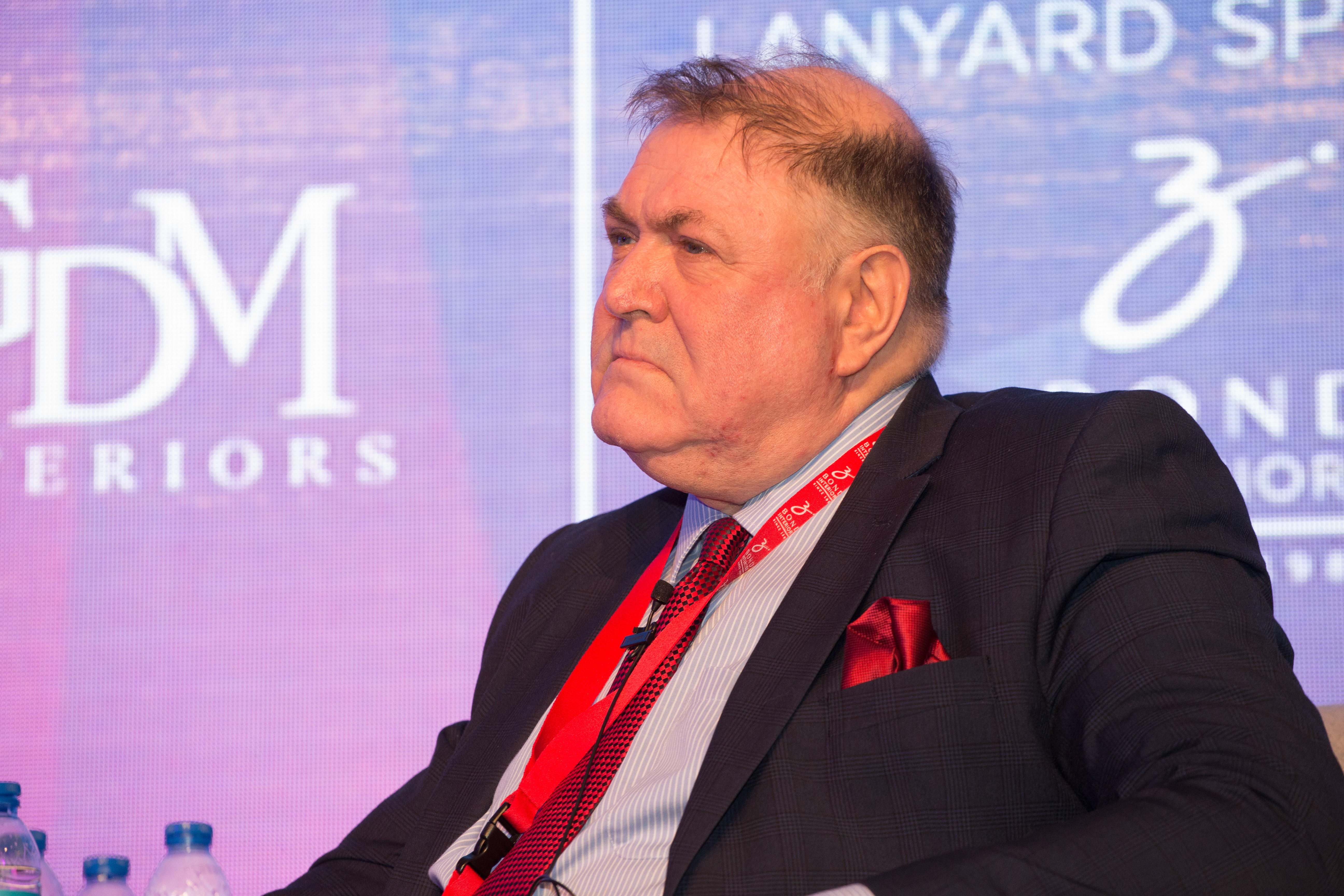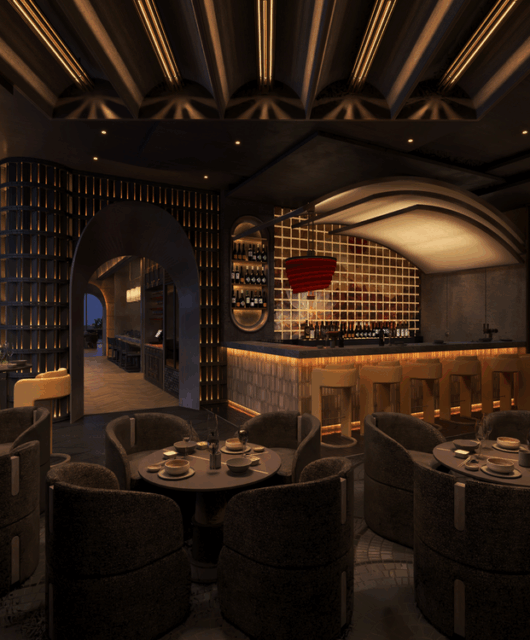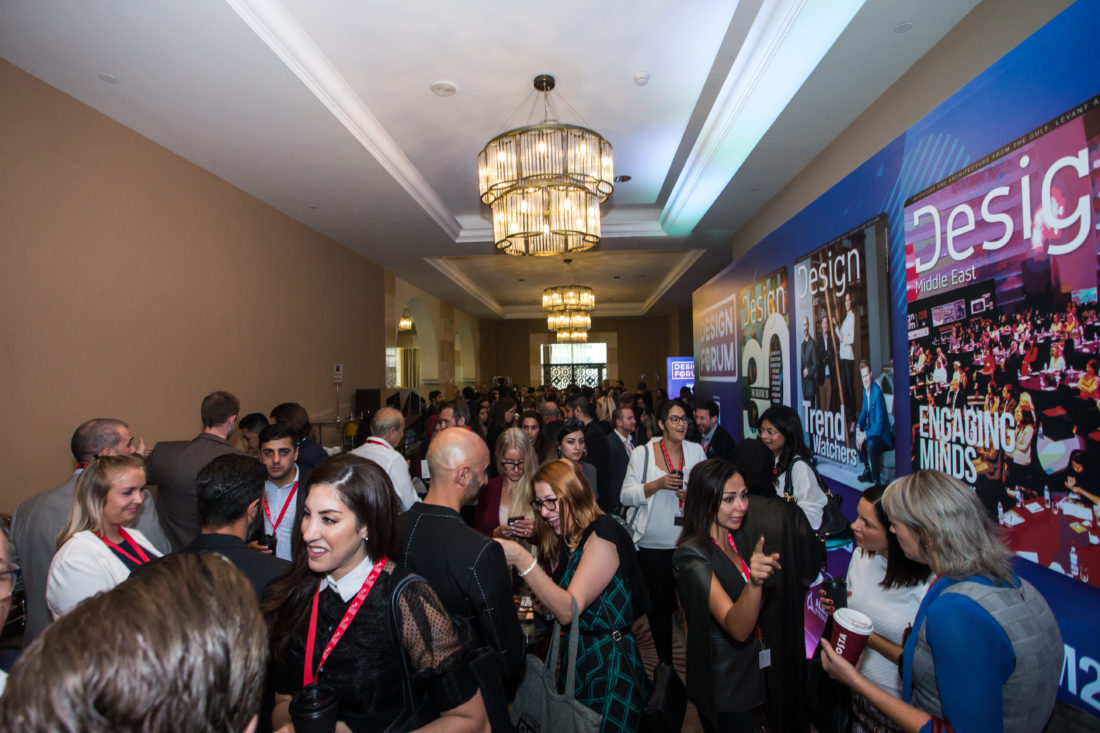
it was a full house and we couldn’t have asked for more! Design Forum on March 20, 2019, at Fairmont The Palm was truly a memorable event bringing the design fraternity together under one roof. The goal was to create a great networking platform and to bring like-minded people together to ideate and socialise. Not just that we succeeded at it, we surpassed our last years’ figures and over 320+ attendees and 18 speakers were part of the event. The industry experts voiced their opinions on the relevant matters pertaining to the industry—millennial’s definition of effective design, focus human-centric design approach, how interactive crystal installations are enhancing the interiors, and healthcare designs that promote holistic healing. All this and more, here are the key moments and highlights of the Design Forum 2019.
Welcome note
Abdelrahim Abusedira
Head of SME Marketing, du
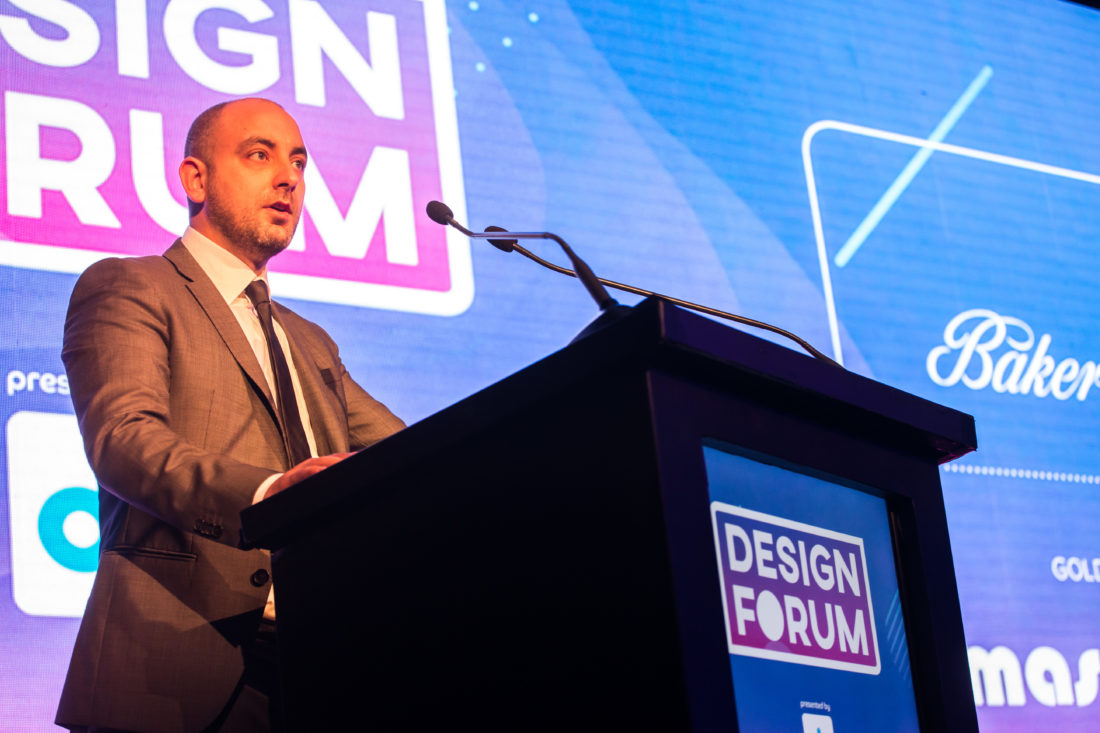
Keynote speech
Khadija Al Bastaki Executive Director
Dubai Design District (d3)
This year, Khadija Al Bastaki, executive director at d3 was the keynote speaker at Design Forum. Al Bastaki discussed how d3 is focussed on driving the growth of the design industry in the region, initiatives, and future plans. d3 is now home to approximately 500 business partners and over 50 retailers as well as a workforce of more than 9,000 creative professionals. Al Bastaki said: “At d3, our core values are to unite, create and inspire the design community. With this in mind, we have spent a lot of time trying to develop an enabling environment for creative professionals. We understand the level of support designers need, whether it’s networking opportunities, a space to showcase their works, or simply a platform to collaborate with like-minded people to create something new and dynamic in the design space.” Al Bastaki also highlighted some of the key initiatives by d3. Al Bastaki shared: “In 2018, alone, d3 hosted more than 300 events, workshops and initiatives, aimed at nurturing the local design community, including the fourth edition of the annual Dubai Design Week. Last year, we also launched ‘Design for Good’, a CSR initiative seeking to connect the design community through creative collaborations that drive social change in the UAE. Several projects were successfully completed, with new ones scheduled for 2019.” In addition, d3 is home to the Dubai Institute for Design and Innovation (DIDI), the first institution in the country to provide higher education in this field in line with the highest international standards.
Panel discussion:
How millennials’ approach to design is different from the previous generation?
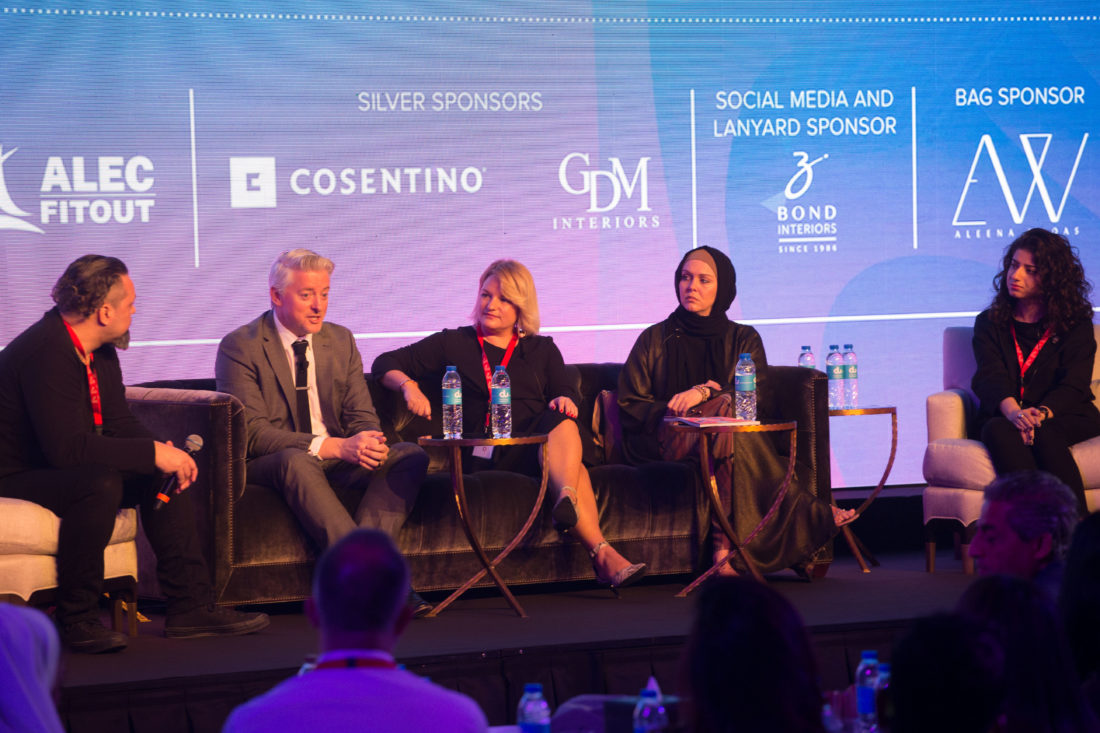
Millennials are a generation driven by social media and things are very fast-paced in their lives. They use social media to research products and engage with other millennials. “ Millennials have absolutely no tolerance for things that are slow and Salmanpour rightly quoted: “The fact is that millennials have grown up in the social media environment and likes on Instagram indicates the success of a project/ product. Actually, it’s an important and simpler way of reaching out to people. Their idea of design is fuss-free and focus is on collaborative spaces.”
Panel discussion:
Are we designing for humans?
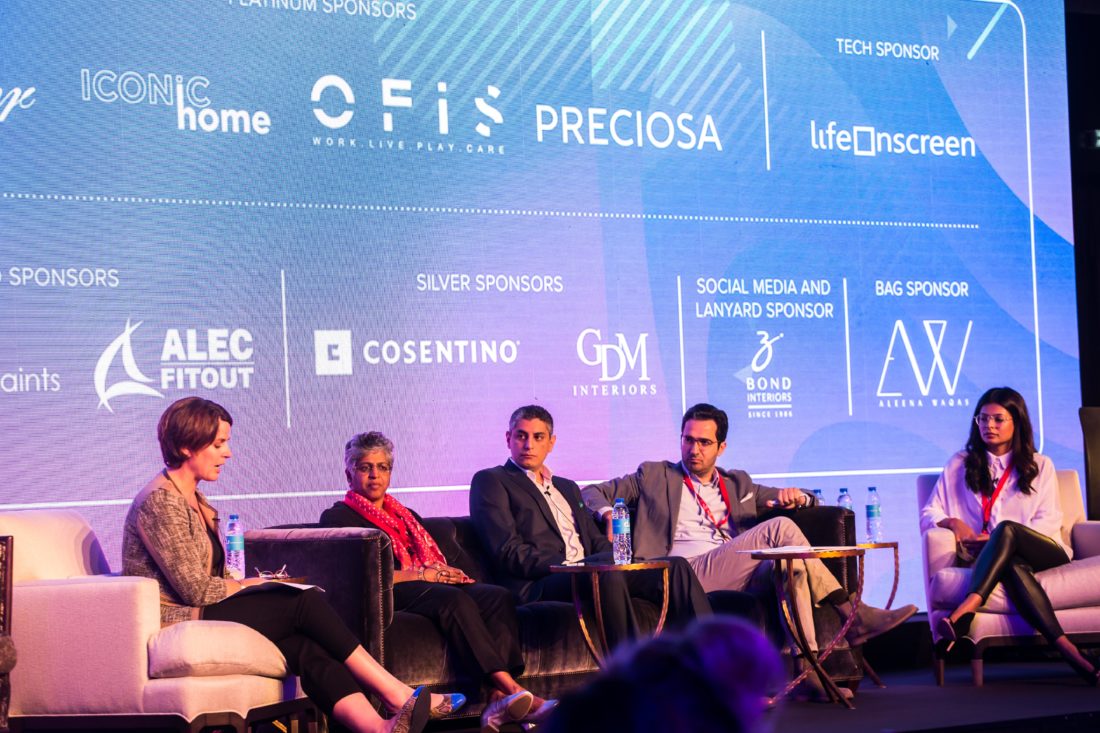
The second panel highlighted the importance of the human-centric designs. Design interventions and structures, the material used, lighting, furniture, biophilia, and other technological advancements can attribute to human health. In fact, the elements of biophilia are all part of the larger environment we live in. This interesting panel was moderated by Leanne Henderson, founder at Taurima and other panellists included Indu Varanasi, founder and director at IRD Design; Bassel Omara, lead design architect, Dorsch Gruppe; Firas Sfair, GM and lead designer, Northcorp and co-founder at Debrief Architects; and Pooja Shah Mulani, lead senior designer at LW. We are designing for people and how can one forget about them, Henderson urged. “The way people interact with design and spaces should be a priority because this affects their well-being and happiness. The human-centric design places the end-users firmly at the heart of projects.”
The importance of applying a human-centric approach to design cannot be underestimated. A successful project considers human perspectives throughout the design process. Omara discussed: “It’s necessary to meet people and understand their primary needs and it’s highly important to interact and communicate with the end-users from the beginning of the project. To understand who all will be using the space and in which manner is one of the factors contributing to the success of the project. Put yourself in place of the end-user and you might be in a better position to evaluate the situation.” Varanasi threw some light on the commercial projects, where there is not just one end-user or set of end-users. Varanasi shared: “In commercial projects, people use space in different ways like an audience, a visitor, or as a workplace. These are crucial determinants for your design. It’s very important to wear different hats at different times to understand how various people with various needs would use a particular space. I know technology is the buzzword but ultimately, we cannot live in the virtual world. We have to solve our own problems. ”
“The client is not always the end-user and it becomes even more important to go deeper in your research and produce a design which is effective,” said Mulani. She further added: “It’s not just the responsibility of the designer to produce a good design, it requires collaborative effort.” For Sfair, a good design is one which benefits its occupants: “You have to educate the clients to let go of certain aspects that are not relevant and focus on other important points for the wellness of the occupants. A strong conceptual approach to design is very important as opposed to just aesthetics approach.”
Presentation:
How interactive crystal installations are enhancing the atmosphere of interiors?
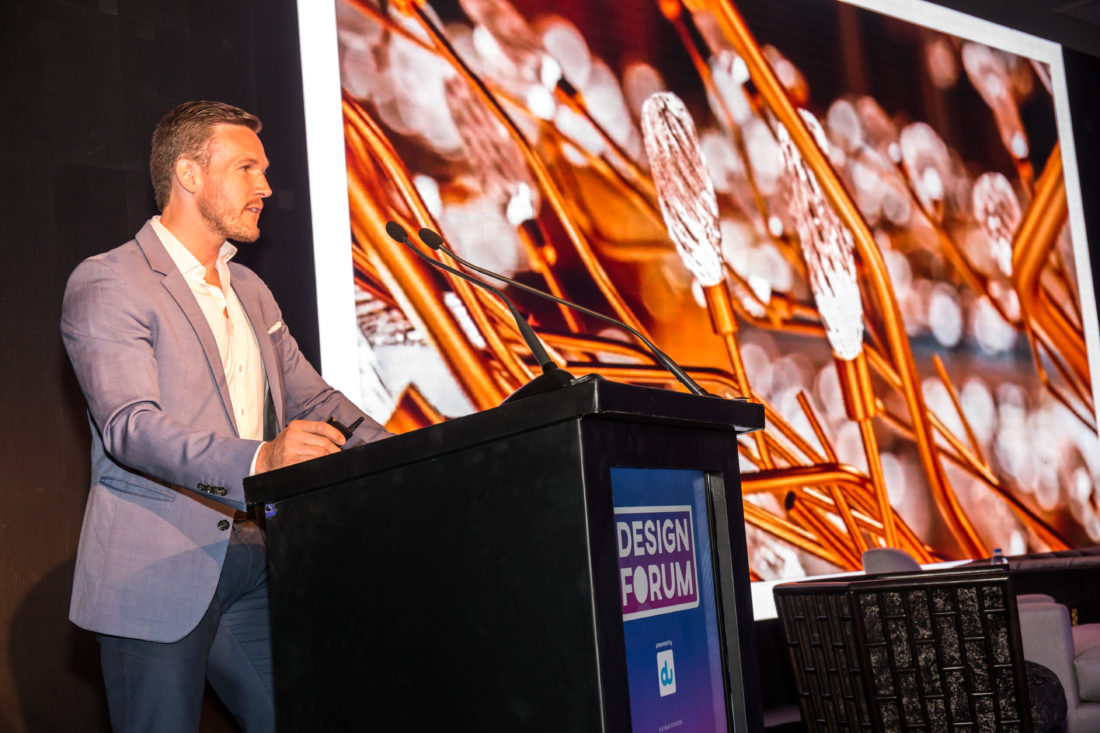
In this digital age, design enthusiasts are interested in seeing something different and something that brings the human quotient and innovative technology together. It’s all about rethinking the connection between people and everyday objects around them like lighting. Martin Frýželka, managing director at Preciosa highlighted how modern lighting installations are incorporating interactive features that senses and respond to human activity. In his presentation, Frýželka stressed: “How historical designs are cultivating into the contemporary ones and how we can use action, reaction, interaction in installation to enhance our interiors.” Interactive light installations have become an extremely popular phenomenon and why not, it’s interesting to see a light that engages and connects people on multi-sensory levels.
Frýželka narrated various examples like, Preciosa’s one of the most popular installations called ‘Breath of Light’, which demonstrates how design and technical ingenuity, turned a chandelier into a playful installation. “Breath of Light installation is inspired by our childhood. It’s an interactive installation where if you would go close to the sensors, the light would behave on its own. It’s a tool for people to interact with space.” Another exciting installation Frýželka talked about was was Canopy of Light, “The inspiration behind this installation was to capture the full bloom of the forest and the idea was to bring the atmosphere of the forest into the interiors. Made from hundreds of hand-blown Bohemian crystal leaves with a champagne matte brass finish, it’s a beautiful installation.” Frýželka added: “I believe we will continue to see more interactive and dynamic lighting installations that create an experience and connect people not only to space but each other.” Frýželka also shared a sneak peek of their latest installation —Carousel of Light, which the brand would showcase at the upcoming Salone del Mobile di Milano in April 2019. He signed off: “Design should not be ruled by the technology but from the technology point of view, it should be part of the right approach in the context of design.”
Panel discussion:
How healthcare design is more than just aesthetics?
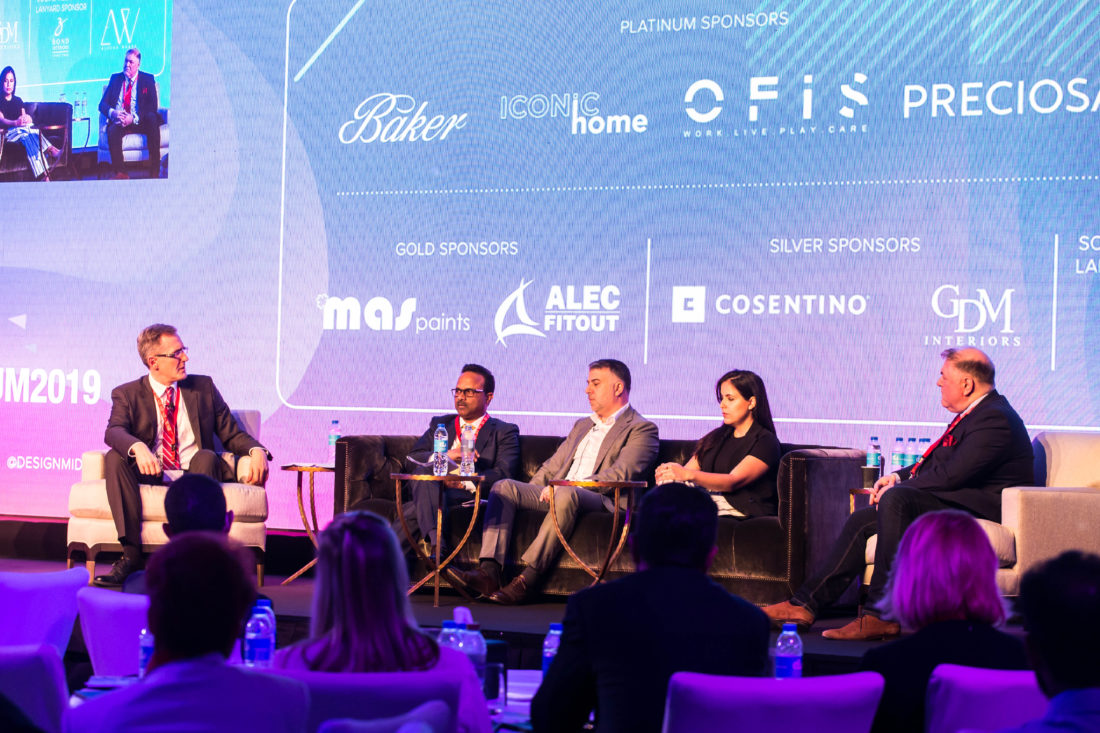
The last panel brought to the limelight the designs in the healthcare sector. There’s a sudden shift in the design industry towards the healthcare sector now. Leading firms are coming forward and delivering quality designs that enhance the guest and patient experience. This panel discussion was moderated by Curtis Laitinen, associate director, healthcare at AECOM Middle East and featured industry experts— Joseph Charles, founder and managing director at Pinnacle Interiors; Stas Louca, managing director and co-founder of H+A; Carla Conte, founder and creative director at Brand Creative; and Clive Robertson, construction project director at Stantec. Laitinen started off: “Nowadays, the focus is on the patient’s wellness. Various statistics show that a patient facing a pleasant view than a wall made of bricks recovers faster. A healthcare facility should aim at reducing stress so that the patient can put his energies into something better.”
Charles urged how smart technology is used in the healthcare sector: “Smart clinic is a new culture— they are kiosks located at public spaces like malls. These clinics have main equipments with one nurse and one technician. The nurse would take the vitals and send them to the doctor. The doctor would then assist the patient after examining his/her reports online and making a video call. We can call it healthcare in retail with maximum convenience. The first of such concept would be launched next month in Dubai.” Conte and her team have recently completed the design for multiple areas for Al Jalila Children’s Hospital in Dubai, including the atrium, teen waiting lounge, corridors, doctors office, and staffroom. She shared her experiences: “For the Al Jalila Children’s Hospital project, the brief included to liven the space and make it less clinical and a more positive environment for patients and staff. As a designer, we should create a space that doesn’t remind patients that they’re sick.”
Louca talked about the relevance of evidencebased design (EBD) in the healthcare sector. EBD is defined as the process of basing decisions about the built environment on credible research to achieve the best possible outcomes. He said: “We are doing our planning based on the EBD to produce the best possible patient, staff, and operational outcomes in a healthcare facility. A patient heals faster when he is in a better environment.” Robertson emphasised: “For a paediatric department, getting graphic designers to create surroundings that make children comfortable, isn’t that expensive. Art can be a positive distraction and inspirational for the patients. In the European countries, regardless of whether the hospital is a five-star facility or a normal hospital, a budget is allocated for art. The same needs to be done in this region as well.”
Design Forum gallery

